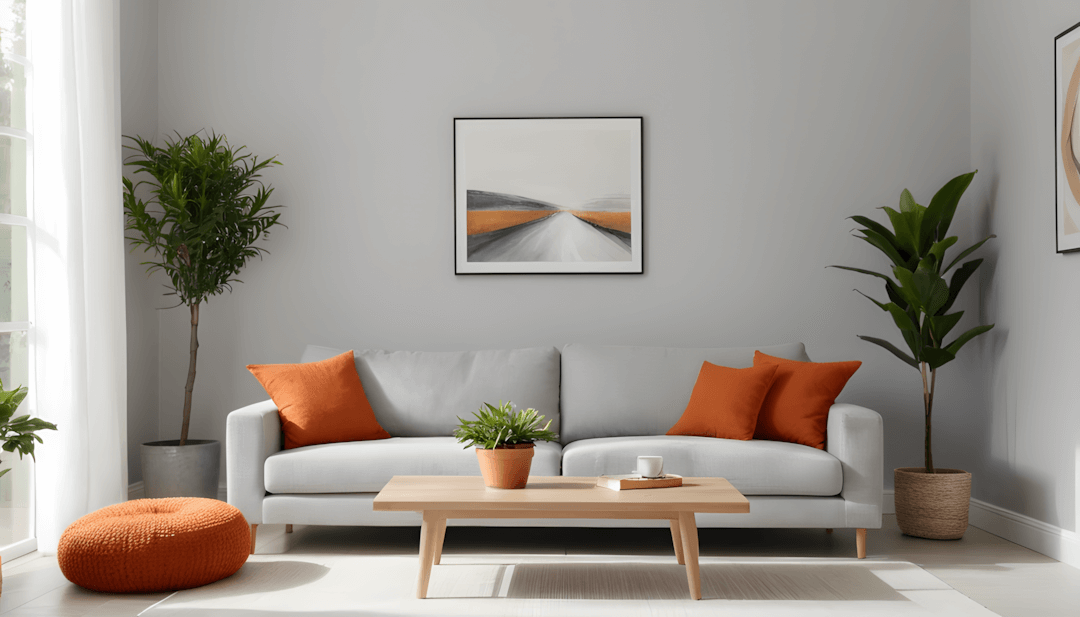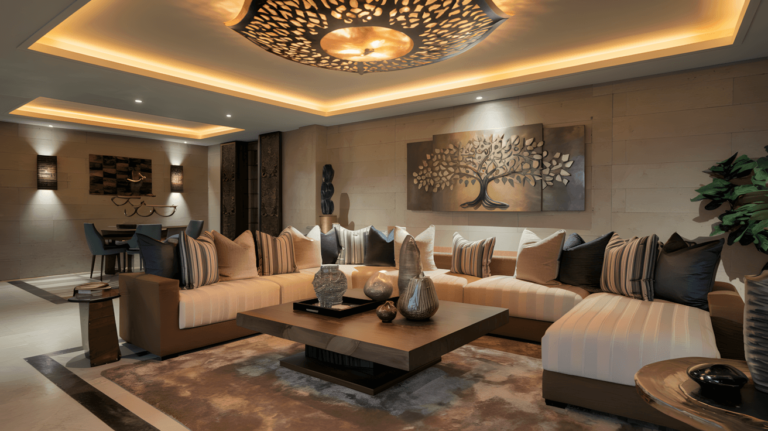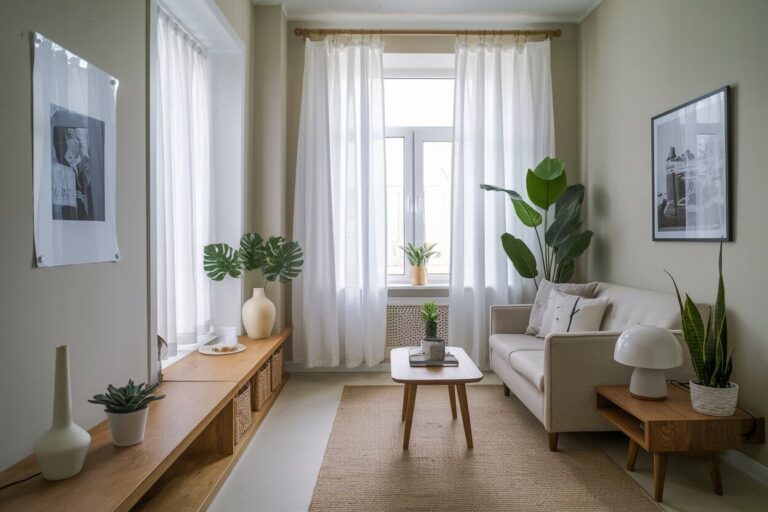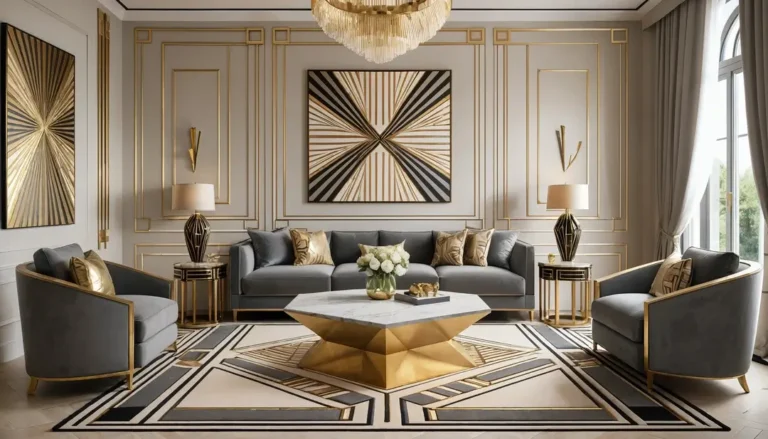In my experience working with homeowners on warm-toned interior projects, I’ve observed that burnt orange often creates remarkably balanced and welcoming living environments. Through various projects, I’ve learned that this rich, earthy color typically provides both energizing and calming qualities while maintaining versatility that accommodates different design preferences and lighting conditions.
Note: For any structural modifications, electrical work, or installations mentioned in this article, always consult with licensed professionals to ensure safety and code compliance.
What makes burnt orange particularly appealing to many homeowners is its ability to add sophistication while maintaining approachability. I’ve found that people often choose this color because it typically creates spaces that feel both contemporary and timeless while working well with various existing furniture and architectural elements.
The key to successful burnt orange integration often lies in balancing its warmth with complementary colors and textures. Effective burnt orange applications typically embrace the color’s natural richness while incorporating elements that prevent overwhelming the space or creating color fatigue over time.
Here are 20 approaches for incorporating burnt orange into living rooms that often work well in different home settings, based on observations from various warm-color design projects.
1. Statement Furniture Pieces
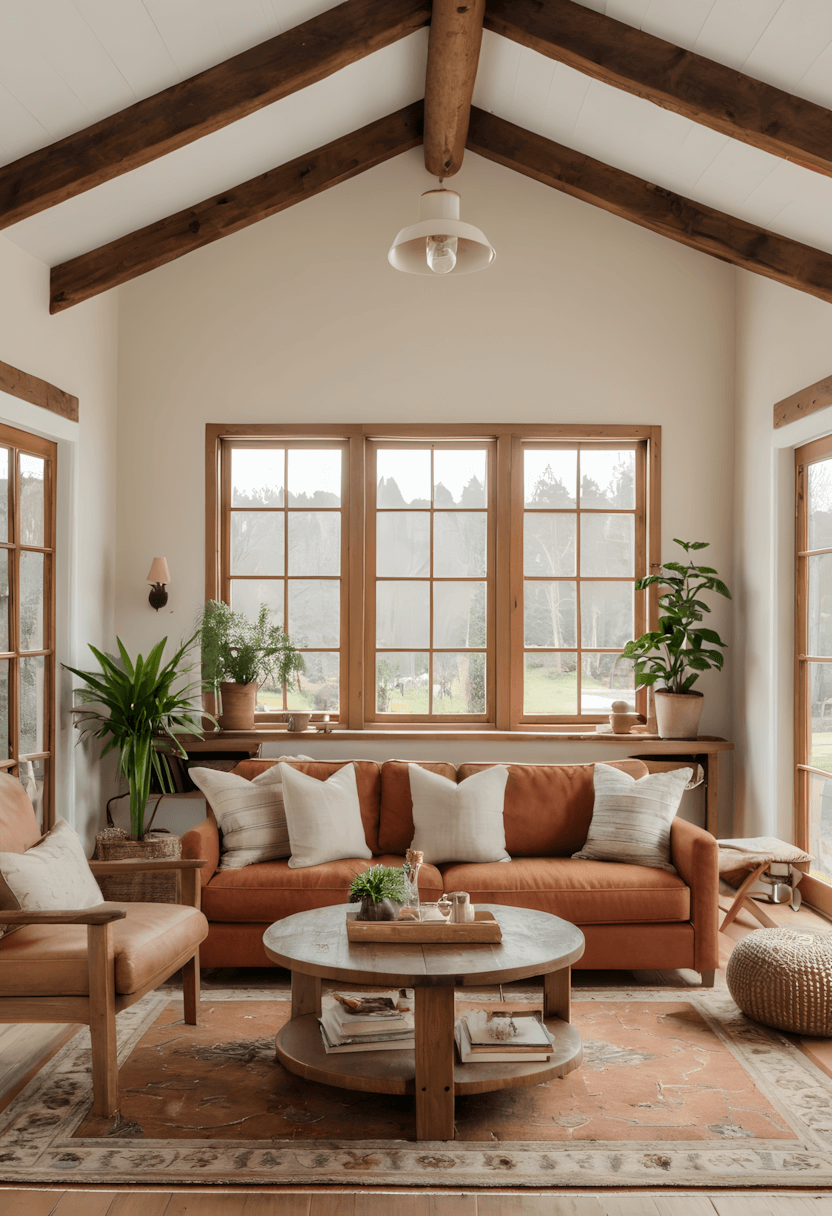
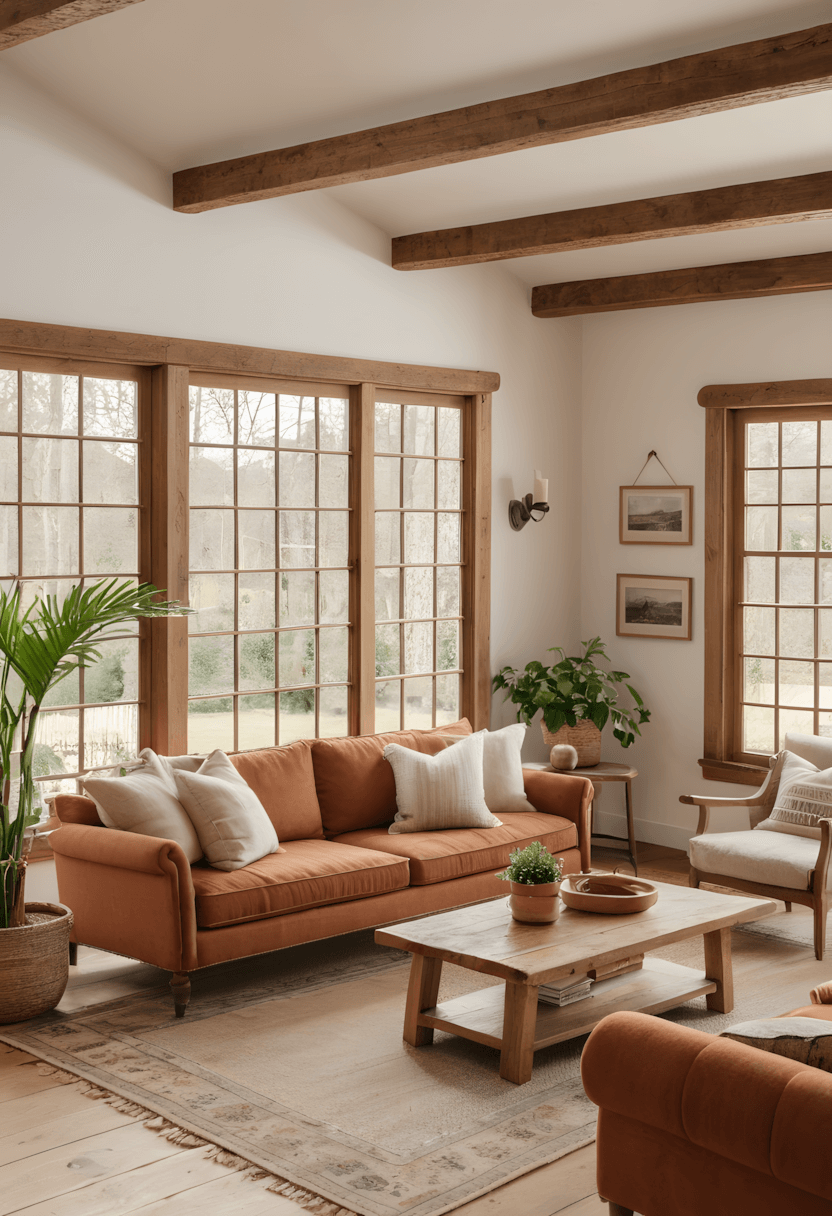
This approach often appeals to homeowners wanting significant color impact through major furniture elements. Burnt orange sofas typically create focal points while providing comfortable seating that anchors entire room color schemes.
Design consideration: Large furniture pieces in bold colors often require careful balance with neutral elements while quality fabric choices ensure long-term satisfaction with the investment.
Practical benefit: Statement furniture typically offers substantial visual impact while providing the flexibility to change surrounding elements as design preferences evolve over time.
2. Layered Textile Combinations
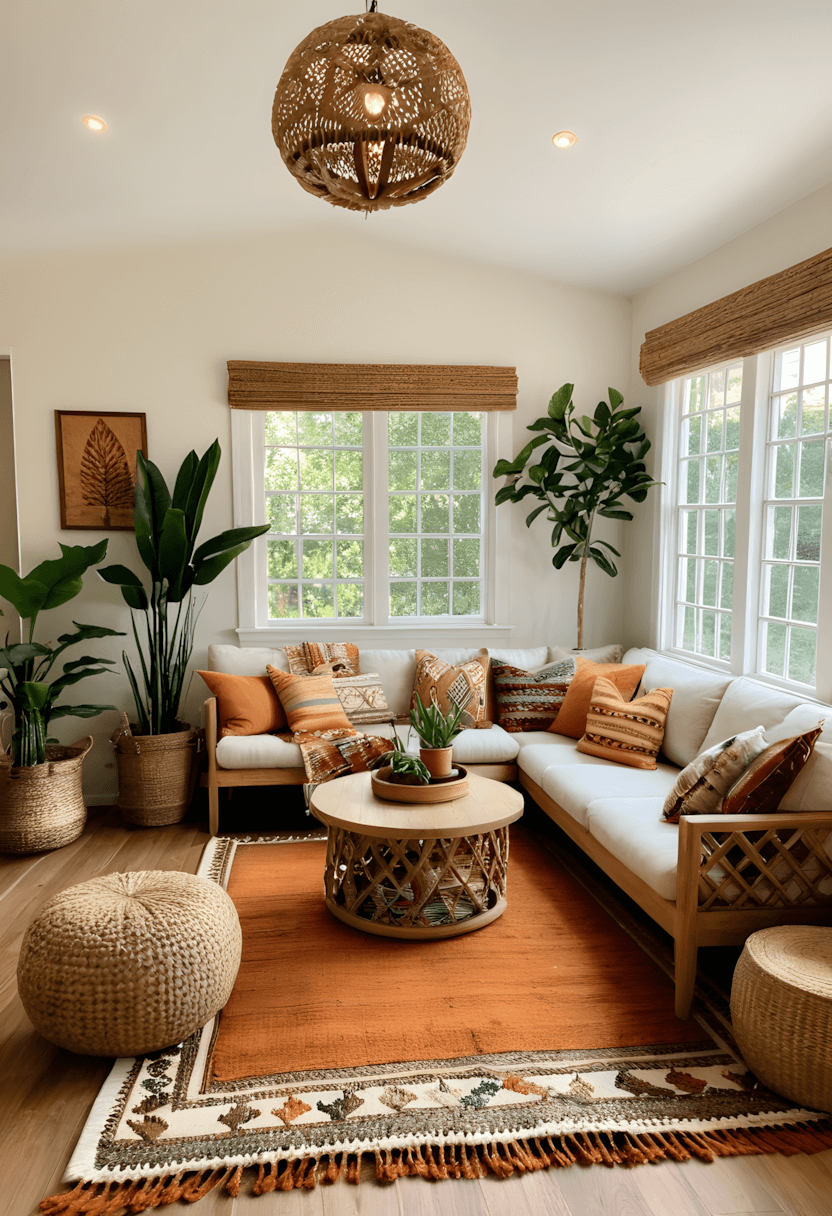
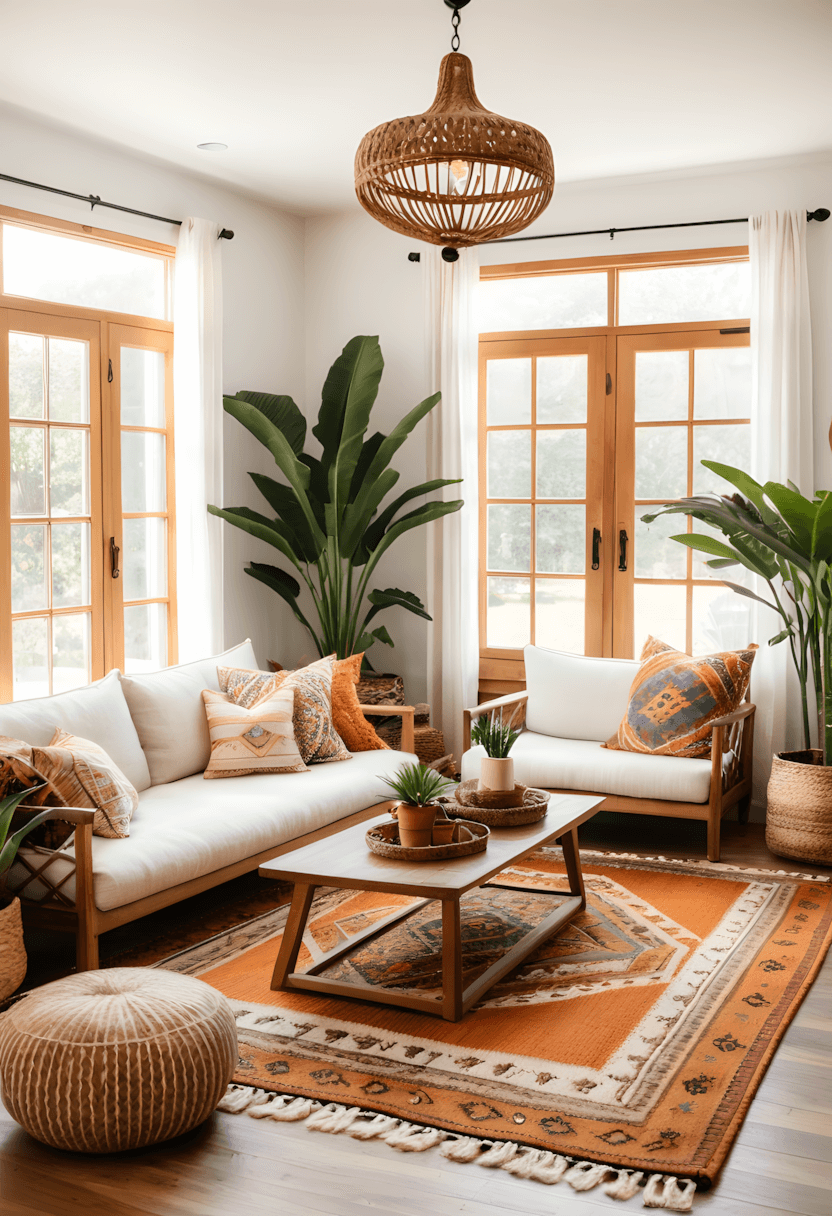
This decorative approach often appeals to those seeking bohemian or eclectic aesthetics. Burnt orange rugs typically provide foundation color while allowing for pattern and texture mixing that enhances overall room character.
Design consideration: Layered textiles often create visual depth while varied textures can prevent color schemes from appearing flat or one-dimensional.
Practical benefit: Textile layering typically allows for seasonal updates while providing opportunities to experiment with color combinations before committing to permanent changes.
3. Accent Wall Applications
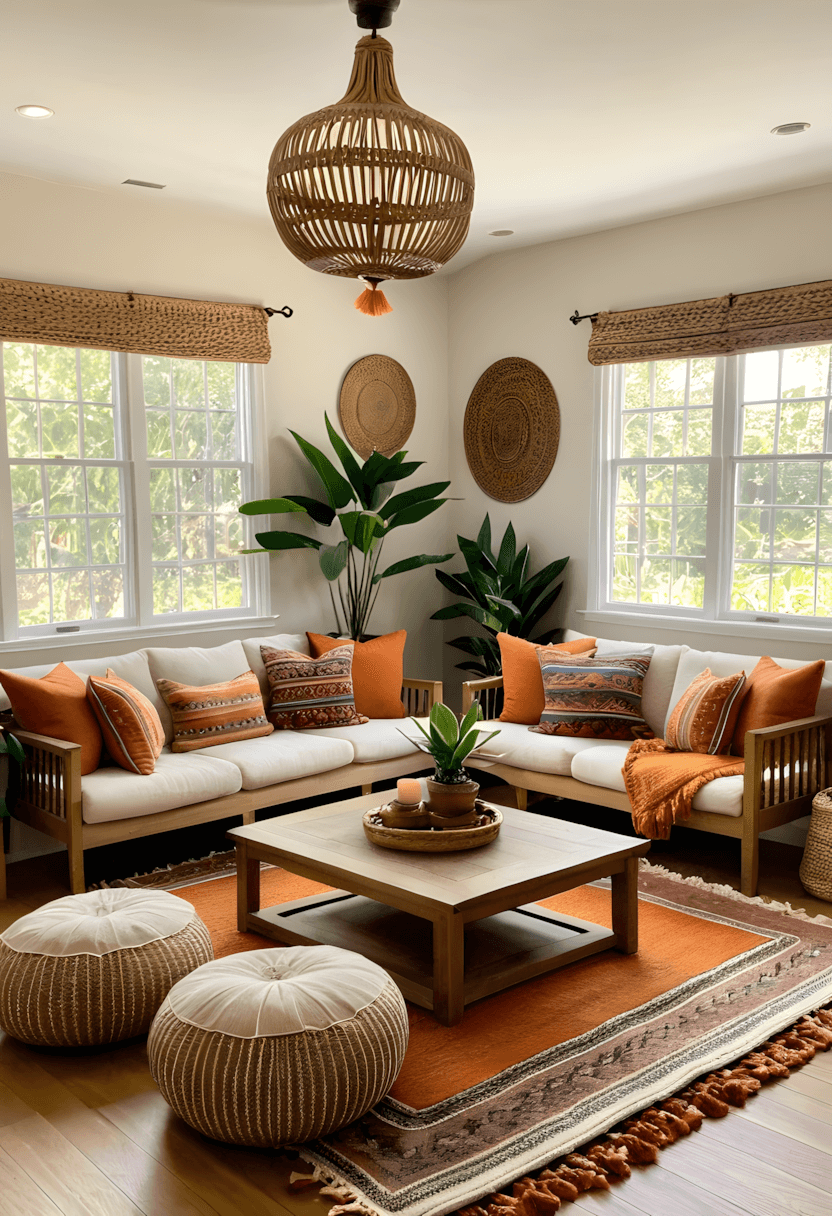
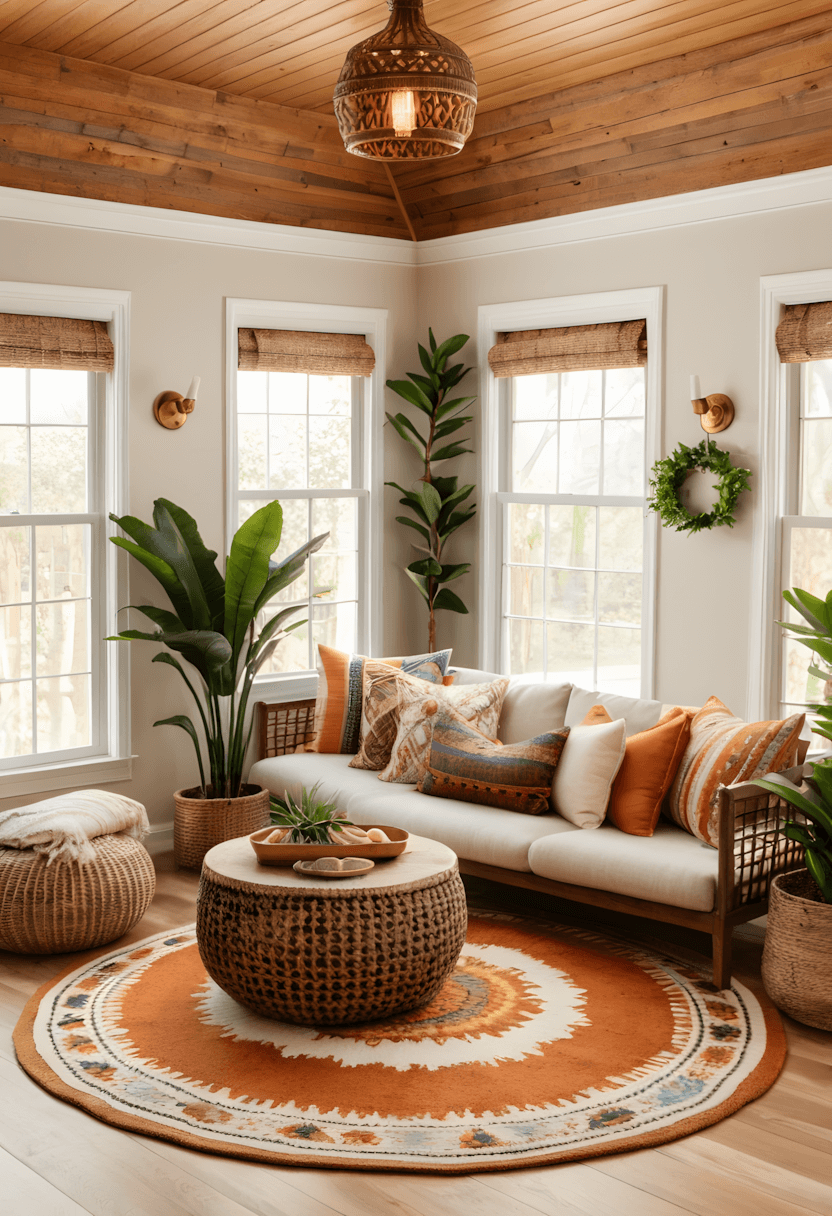
This color technique often appeals to homeowners wanting dramatic impact without overwhelming commitment. Burnt orange accent walls typically create focal points while allowing neutral colors to dominate the remaining space.
Design consideration: Single accent walls often provide color benefits while maintaining visual balance through neutral surrounding surfaces that prevent color saturation.
Practical benefit: Wall color changes typically offer affordable room transformations while providing flexibility to modify or remove bold colors as preferences change.
4. Luxurious Material Pairings
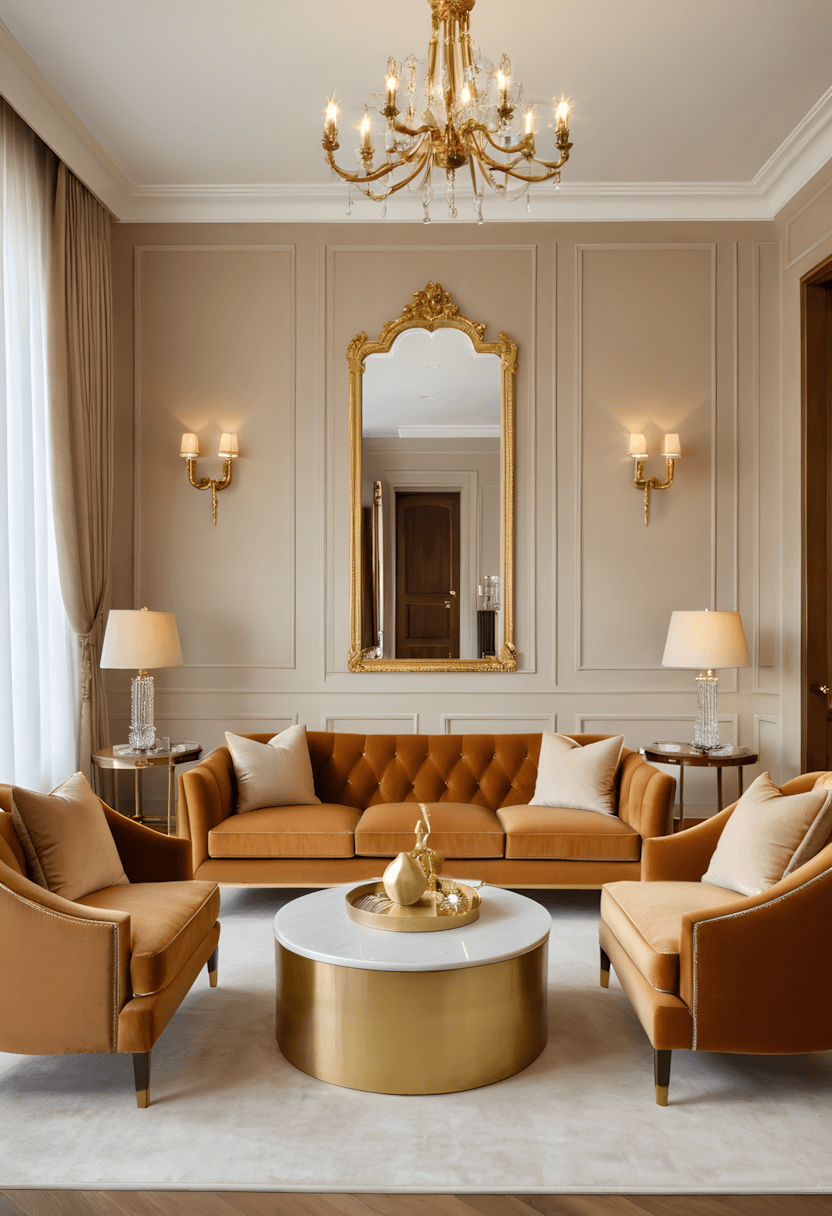
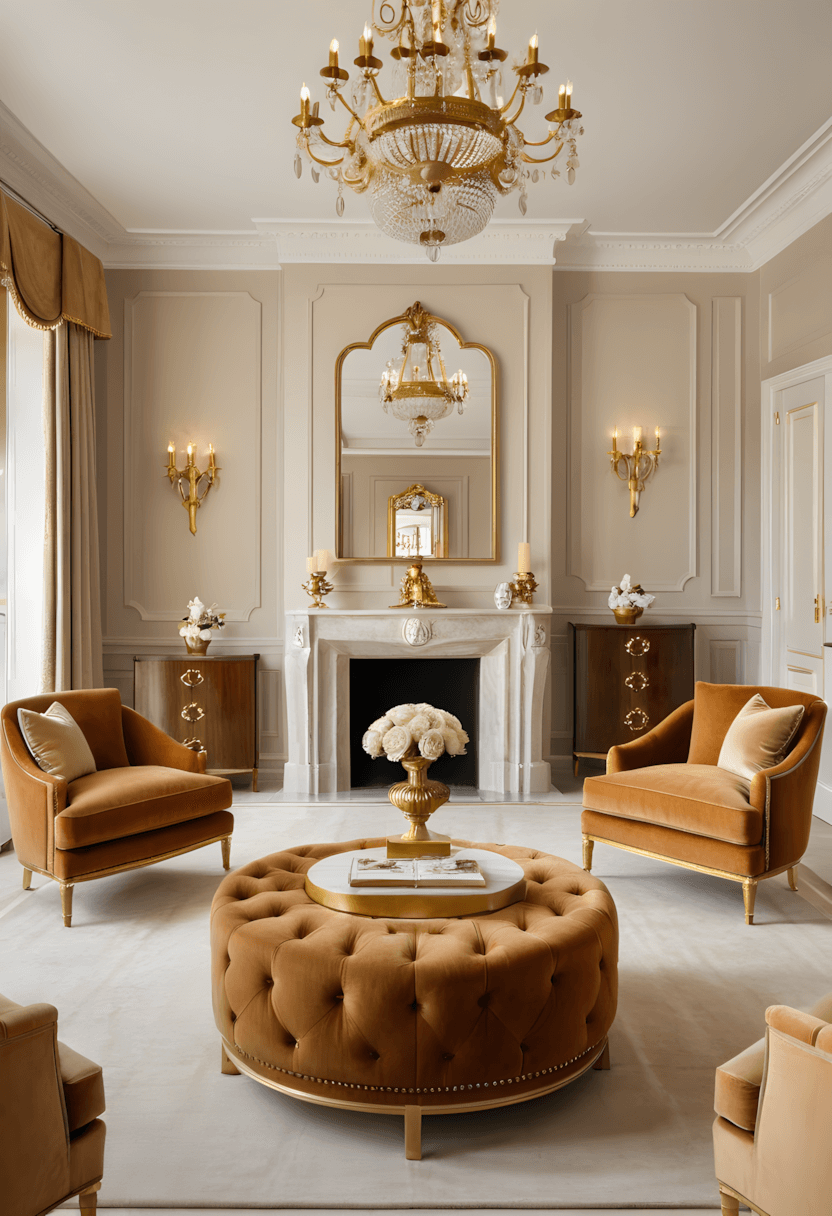
This sophisticated approach often appeals to those seeking elegant, refined atmospheres. Burnt orange combined with metallic accents typically creates rich, luxurious feelings while maintaining warmth that prevents formality from becoming cold.
Design consideration: Metallic combinations often enhance color richness while providing reflective surfaces that distribute both natural and artificial light throughout the space.
Practical benefit: Quality metallic accents typically offer lasting appeal while providing opportunities to coordinate with various lighting conditions and seasonal changes.
5. Curated Art Collections
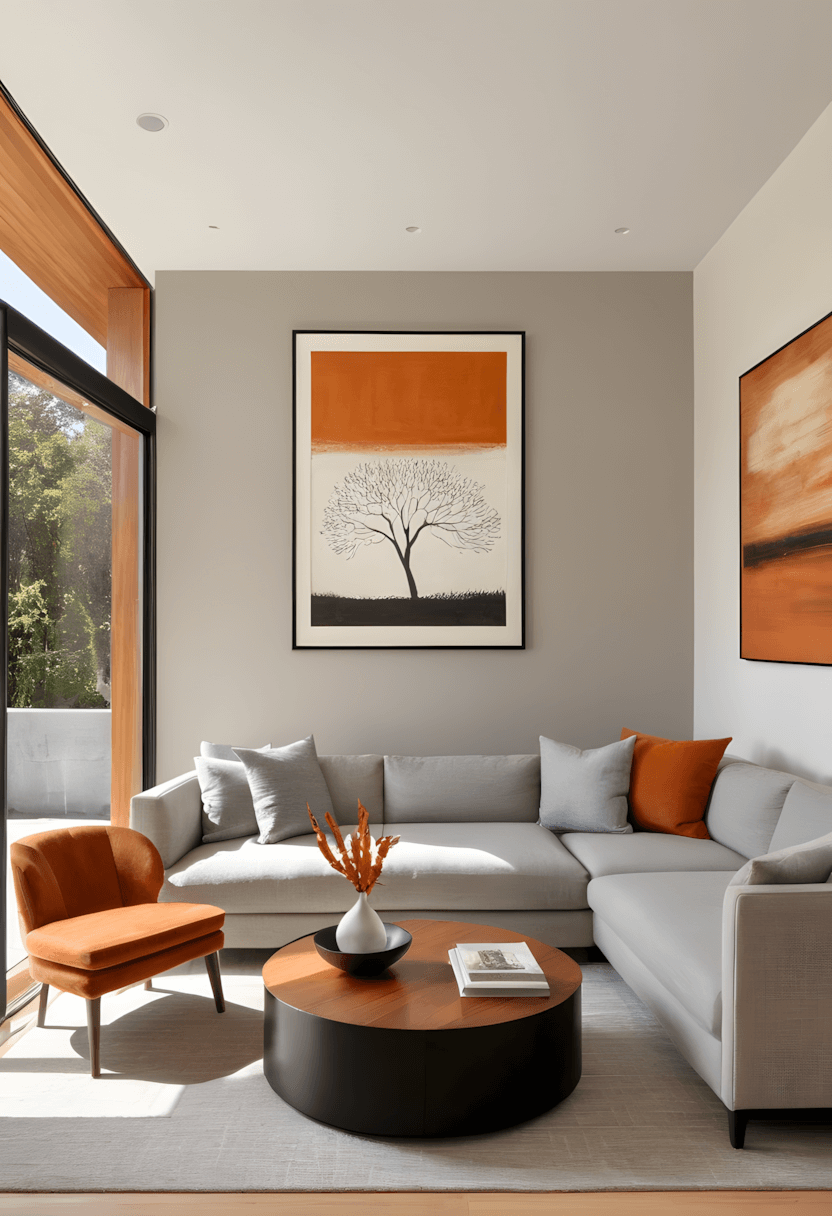
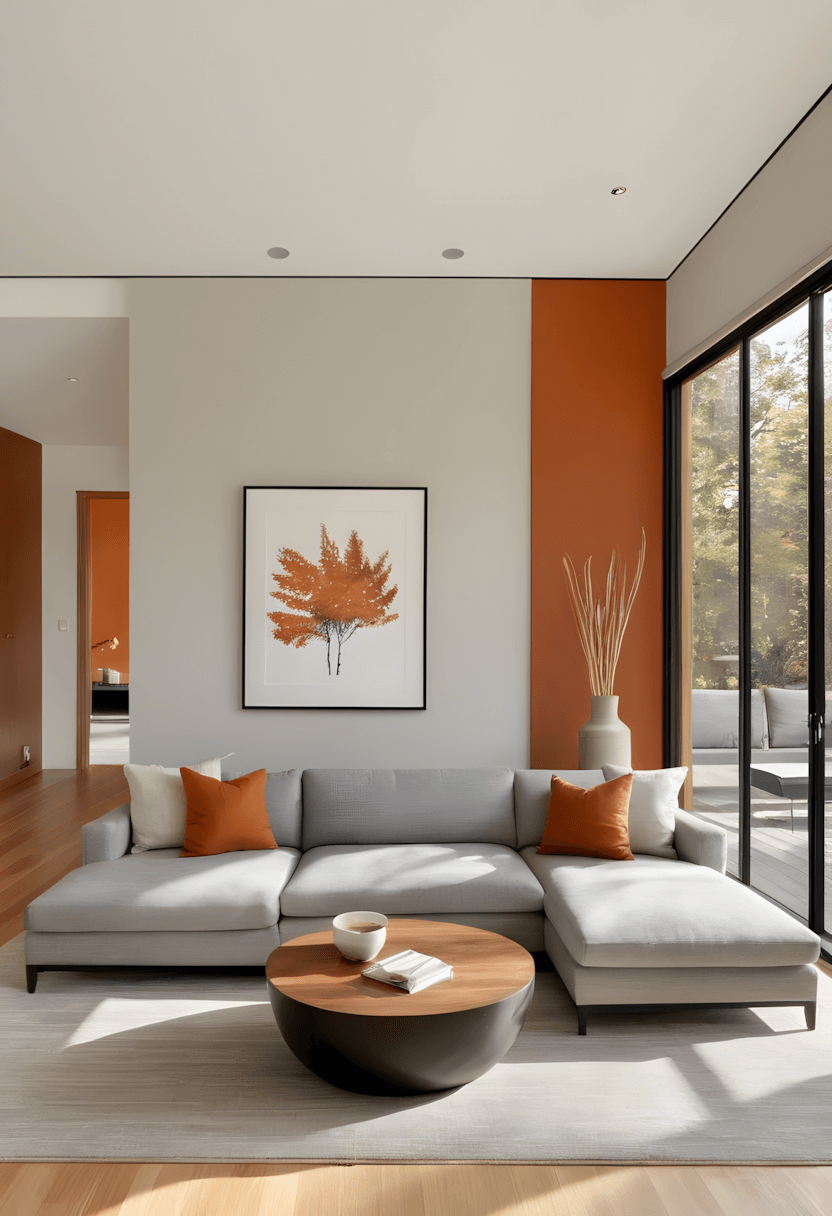
This wall treatment often appeals to homeowners wanting personalized, gallery-like character. Burnt orange artwork typically provides color coordination while showcasing personal taste and creating visual interest on vertical surfaces.
Design consideration: Art collections often allow for color introduction while providing opportunities to display meaningful pieces that enhance the room’s personal character.
Practical benefit: Artwork typically offers flexible color integration while providing conversation pieces that can be rearranged or updated as collections grow or change.
6. Textural Accent Elements
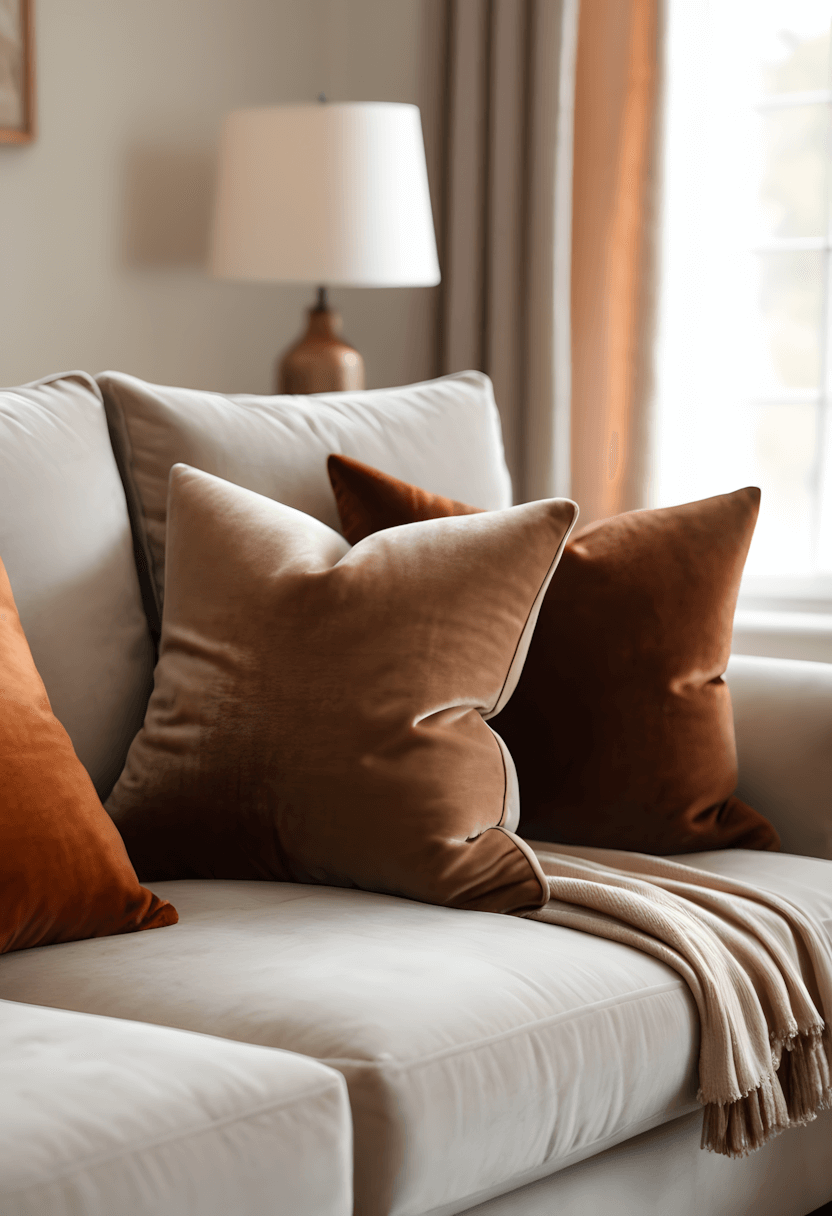
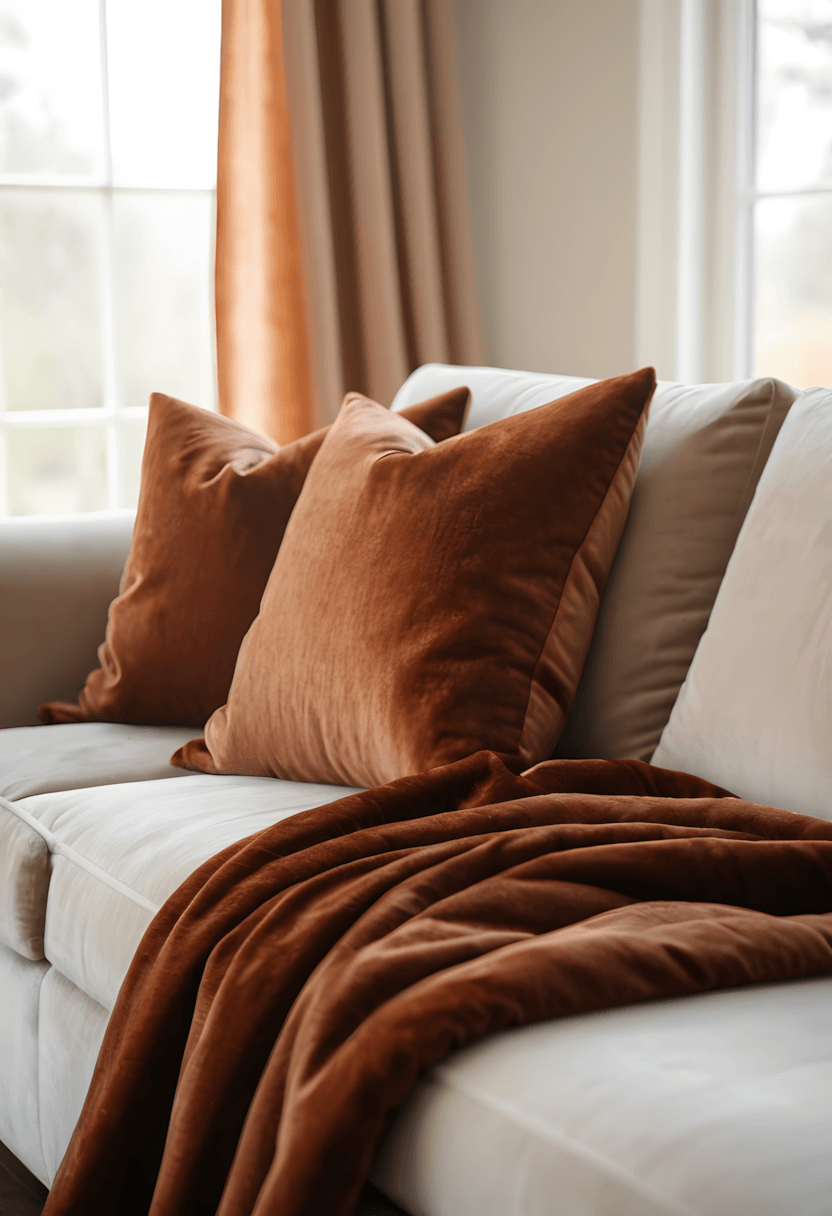
This comfort approach often appeals to those prioritizing both style and coziness. Burnt orange throw pillows typically provide affordable color introduction while adding necessary softness and comfort to seating areas.
Design consideration: Velvet and similar rich textures often enhance color depth while providing tactile appeal that increases the overall comfort and luxury feeling.
Practical benefit: Accent pillows typically allow for easy seasonal updates while providing practical comfort that serves both aesthetic and functional purposes.
7. Mid-Century Style Integration
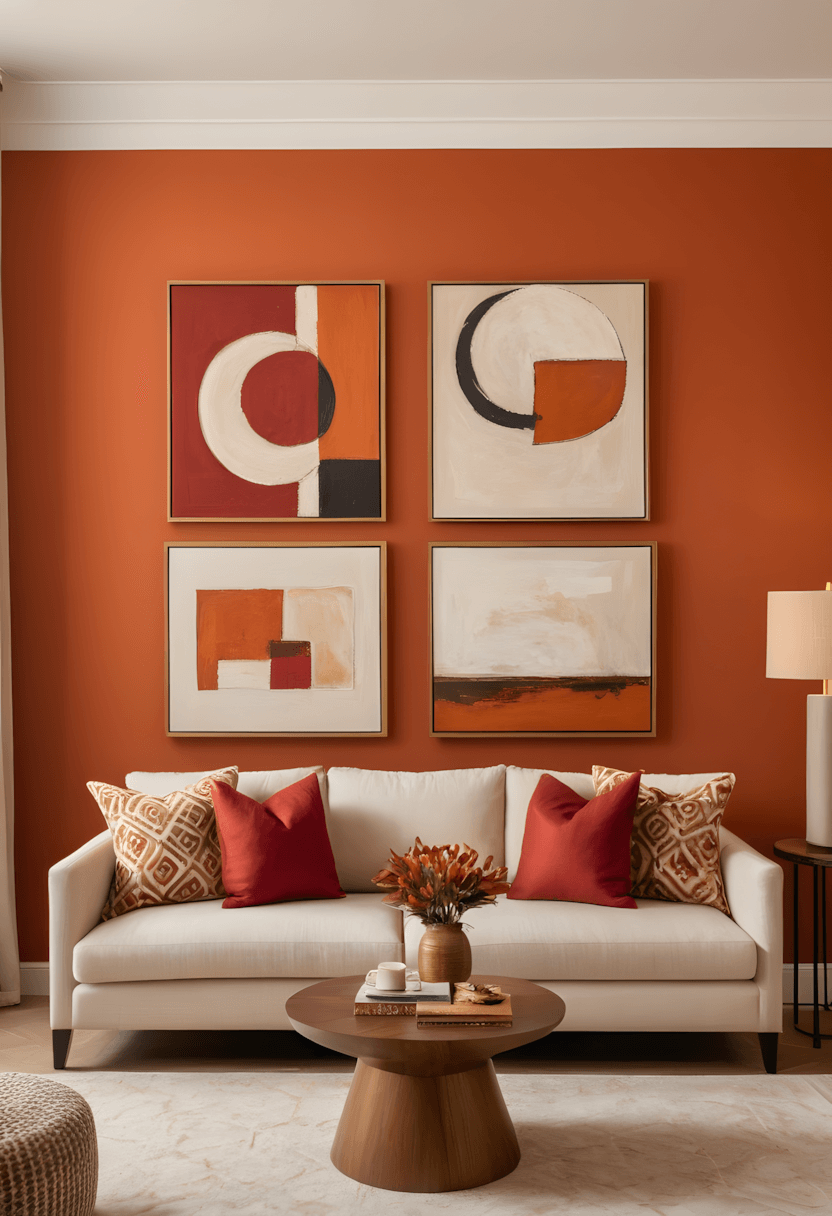
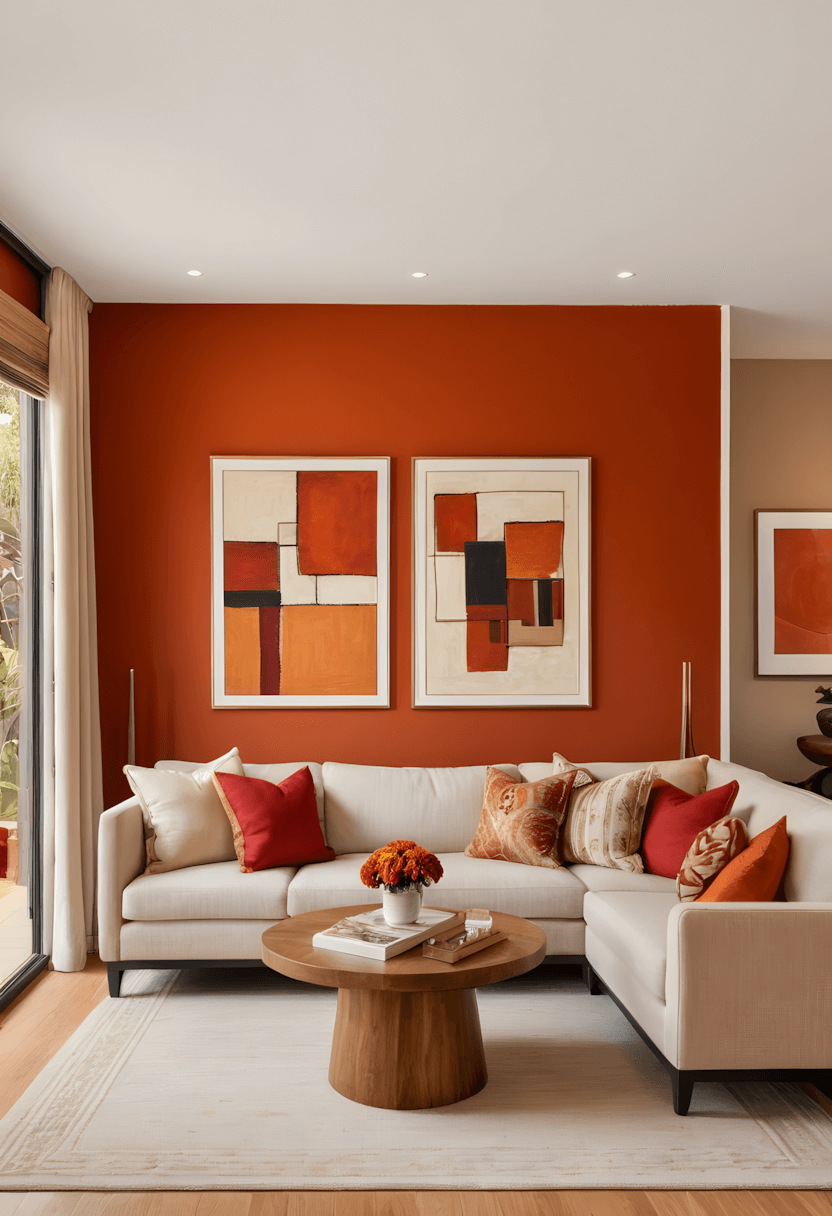
This design approach often appeals to homeowners appreciating retro aesthetics. Burnt orange furniture pieces typically complement mid-century lines while providing the warm colors characteristic of that design era.
Design consideration: Mid-century styling often emphasizes clean lines while burnt orange provides the period-appropriate color that enhances authentic vintage aesthetics.
Practical benefit: Mid-century furniture typically offers timeless appeal while burnt orange accents provide warmth that prevents minimalist designs from feeling cold or sterile.
8. Window Treatment Solutions
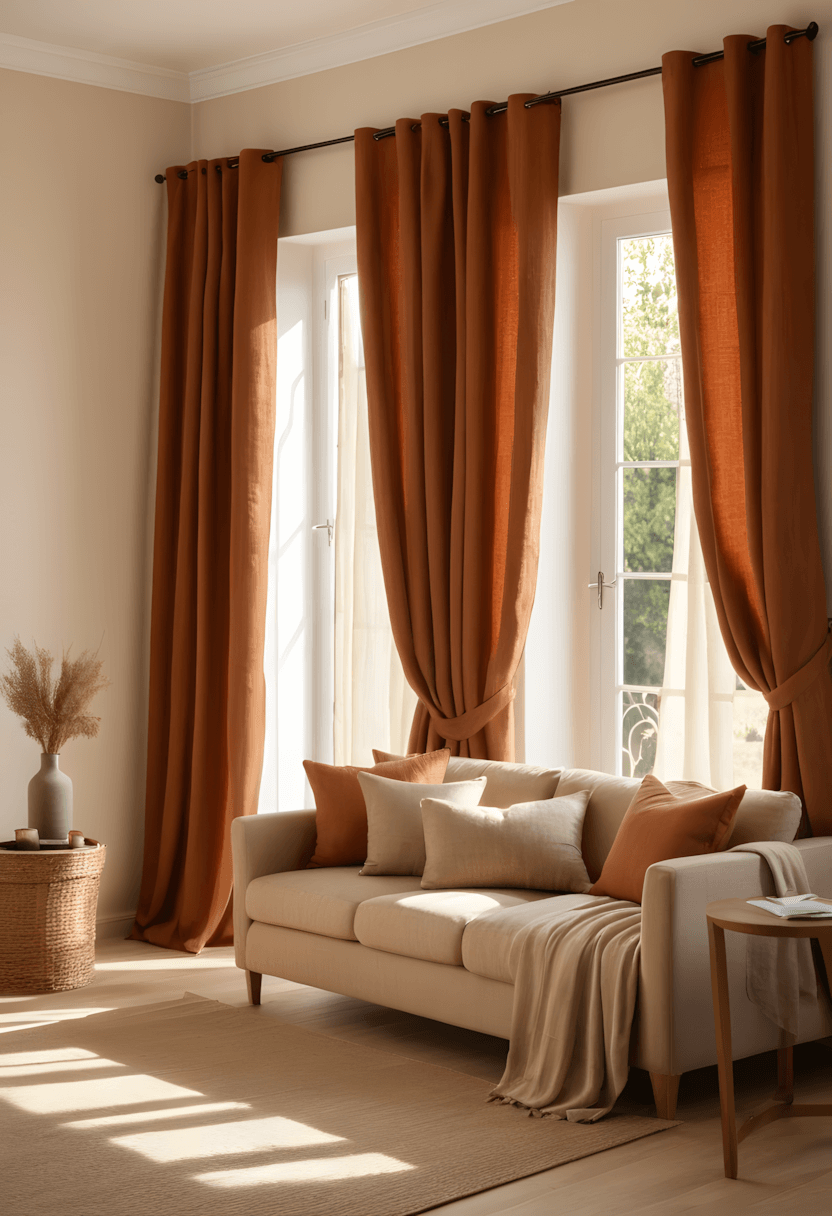
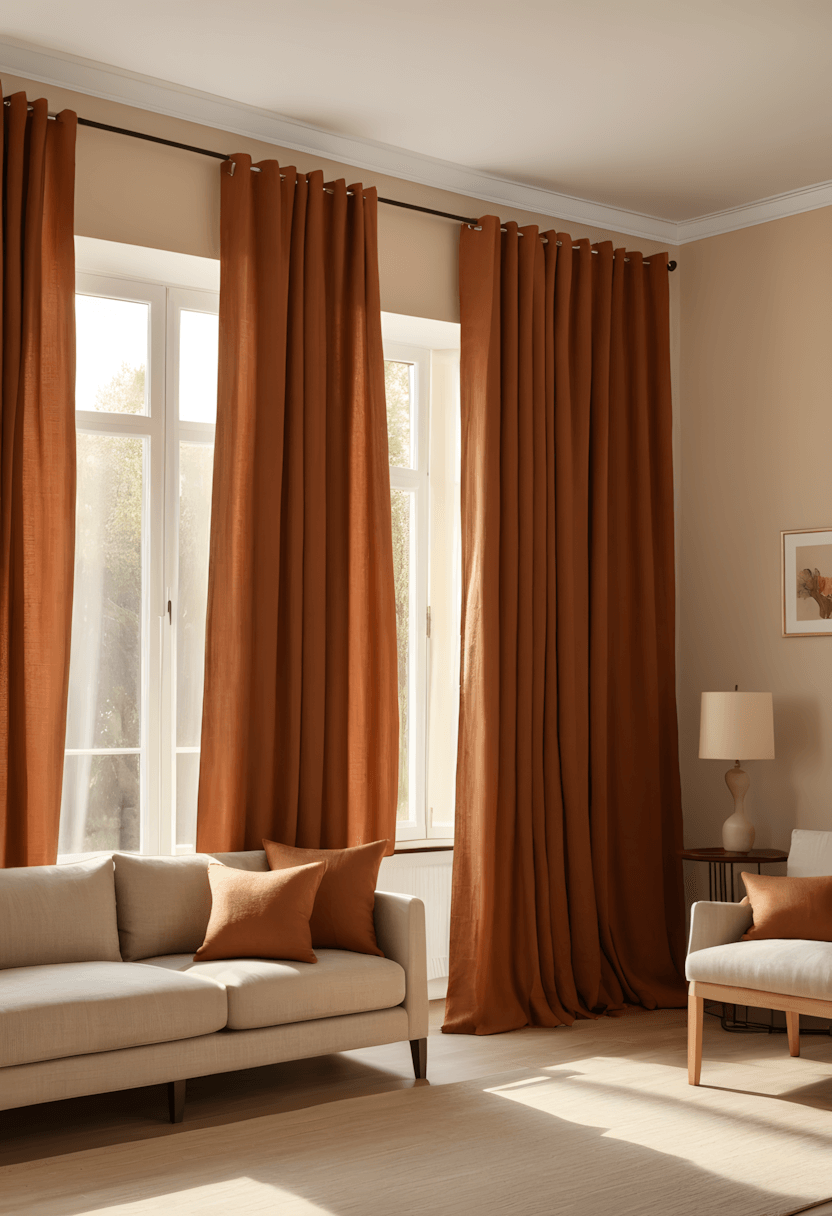
This architectural approach often appeals to those wanting both function and style. Burnt orange curtains typically provide privacy and light control while adding significant color impact to window areas.
Design consideration: Natural fabrics often enhance color authenticity while providing texture that complements rather than competes with other room elements.
Practical benefit: Quality window treatments typically improve energy efficiency while offering light control options that enhance both daytime and evening room atmospheres.
9. Mixed Material Combinations
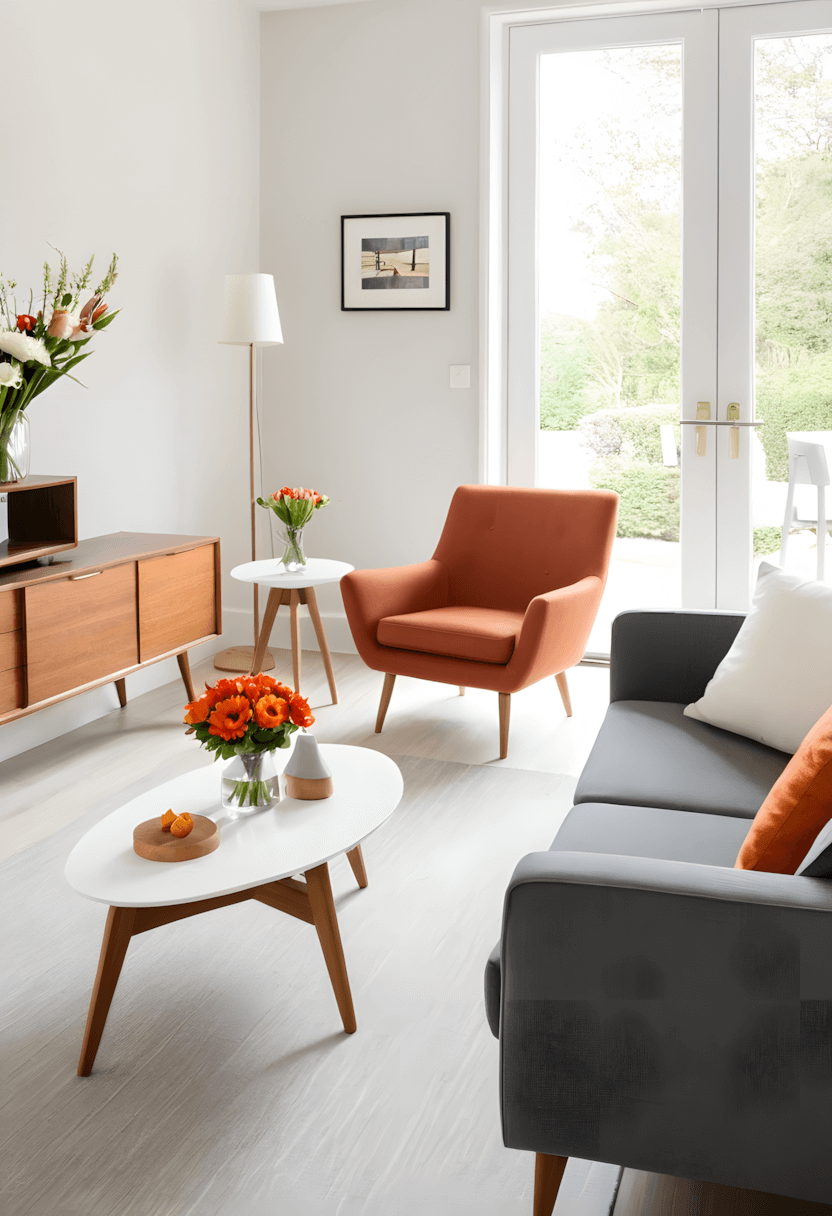
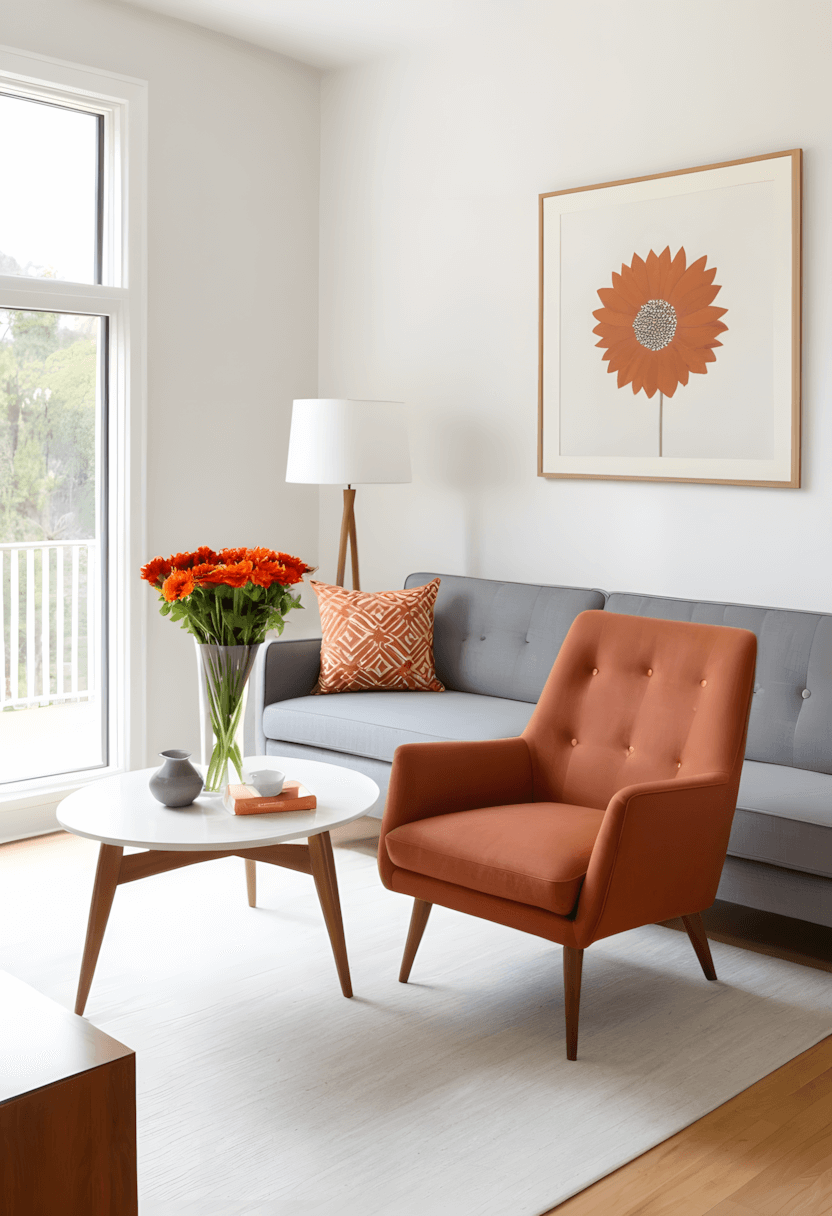
This textural approach often appeals to homeowners seeking authentic, lived-in character. Burnt orange combined with leather typically creates rich, layered looks while providing durable materials suitable for family use.
Design consideration: Natural material combinations often develop beautiful patina over time while providing varied textures that enhance overall room sophistication.
Practical benefit: Leather and similar materials typically improve with age while offering easy maintenance that makes them practical for everyday family living.
10. Seasonal Layering Techniques
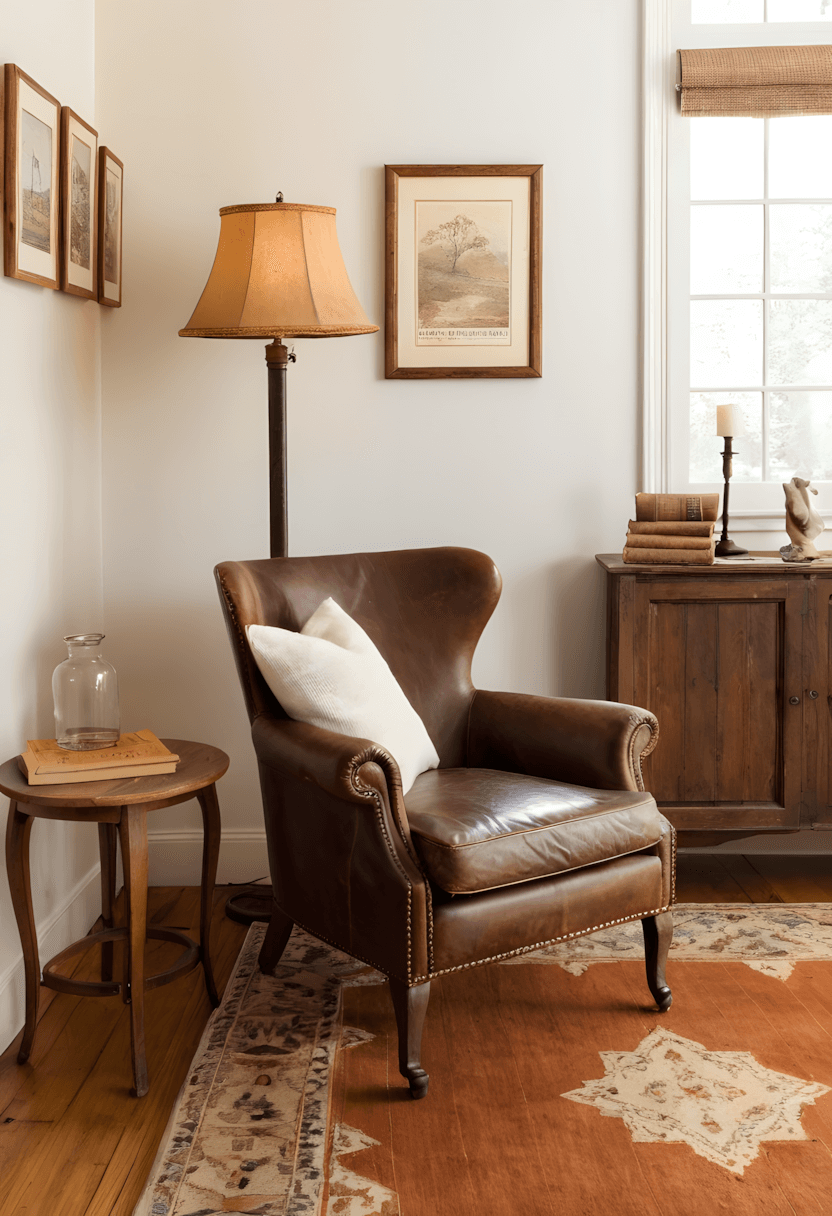
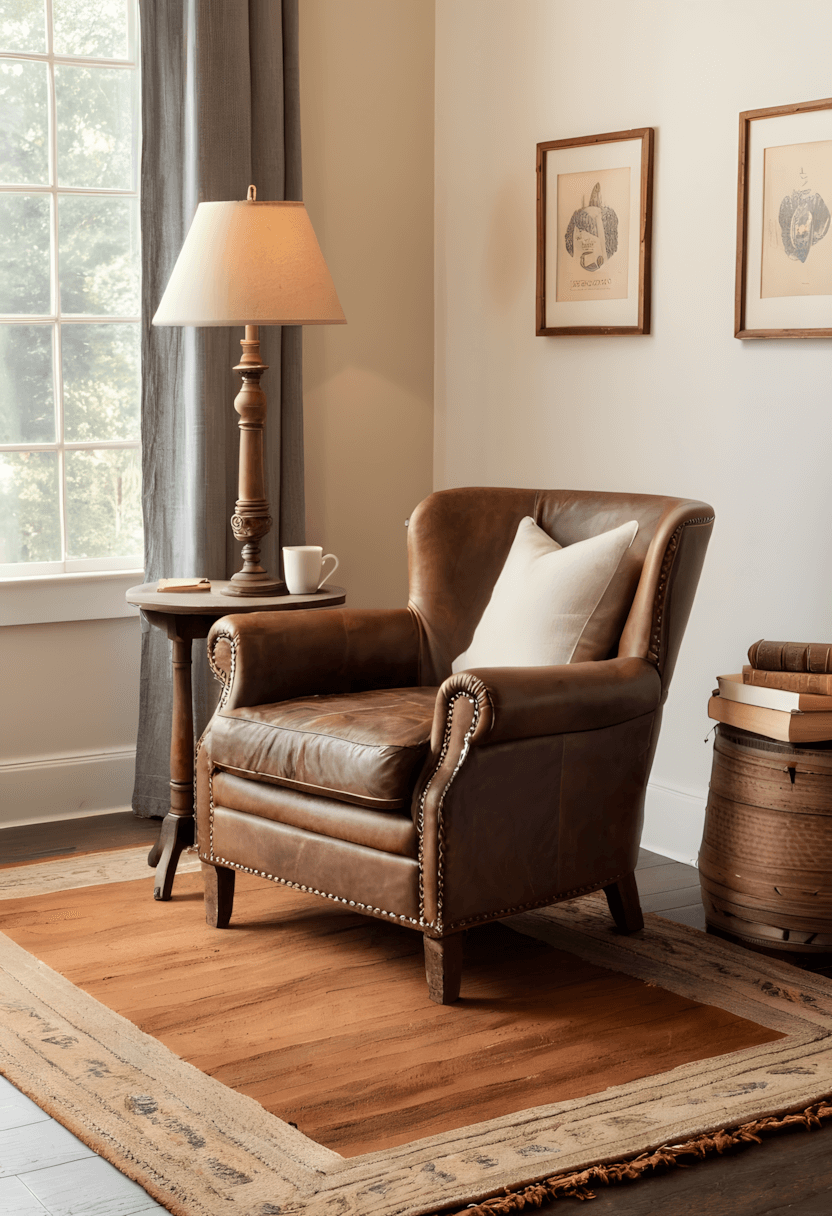
This flexible approach often appeals to those wanting versatile, changeable color schemes. Burnt orange throws typically provide warmth during cooler months while offering easy storage during seasons when lighter colors are preferred.
Design consideration: Removable elements often provide color flexibility while allowing homeowners to adjust room mood according to seasonal preferences and lighting changes.
Practical benefit: Seasonal accessories typically extend room usability while providing affordable ways to refresh spaces without major furniture or paint investments.
11. Contemporary Contrast Schemes
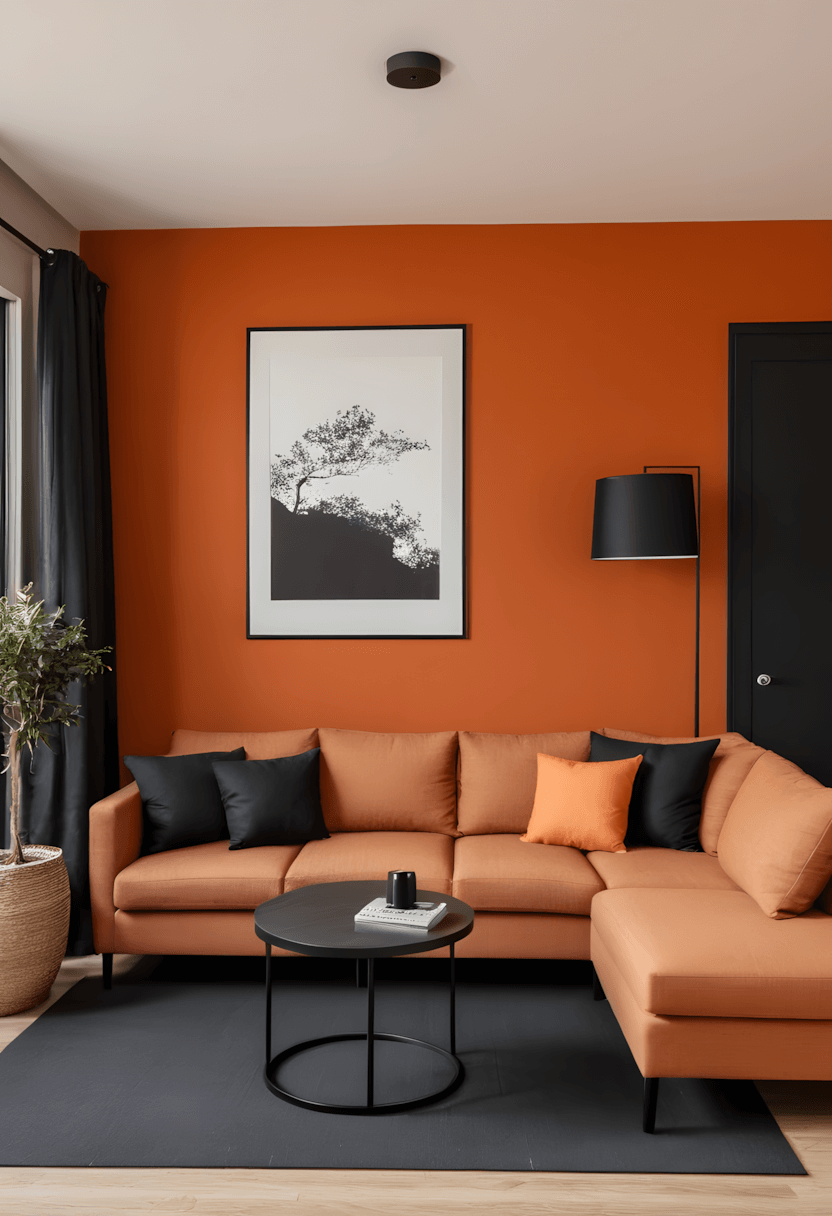
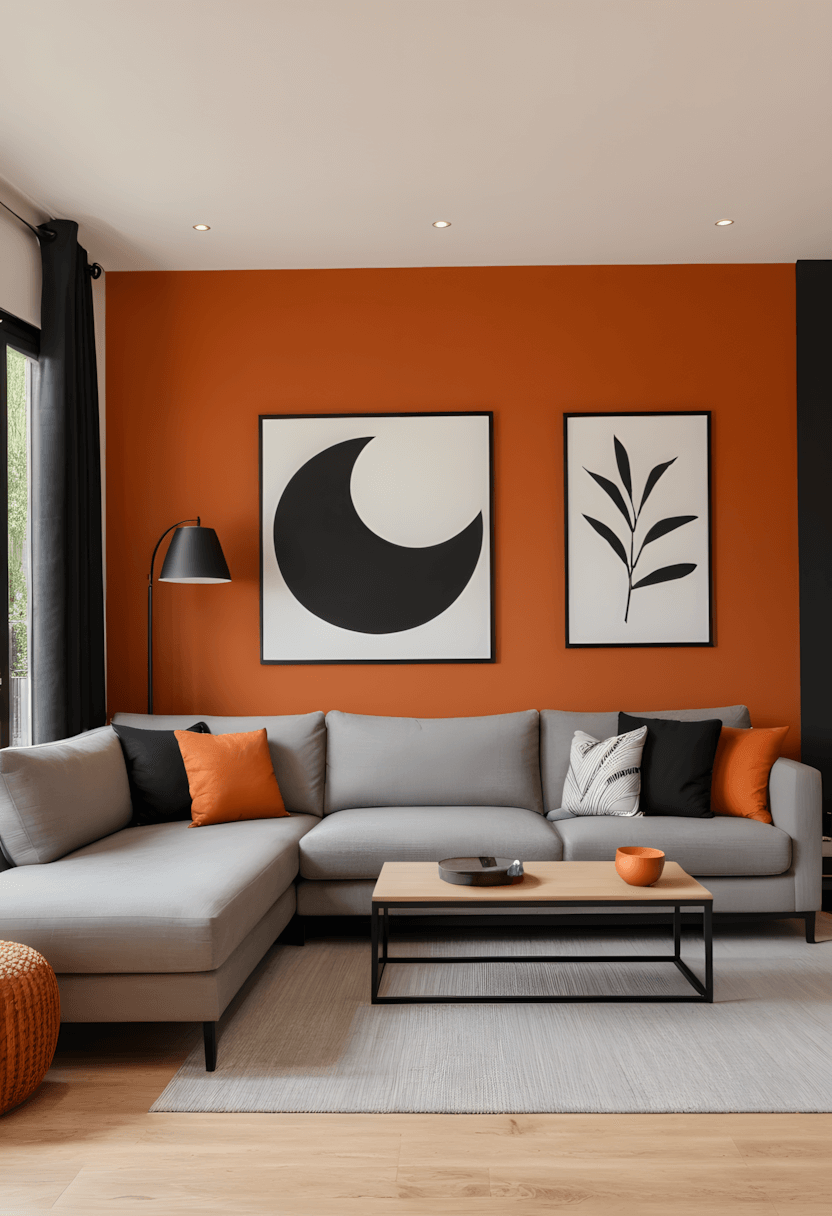
This modern approach often appeals to homeowners wanting bold, dramatic aesthetics. Burnt orange combined with black typically creates striking visual impact while maintaining sophisticated color relationships.
Design consideration: High contrast combinations often create dynamic visual interest while requiring careful balance to prevent overwhelming or harsh effects.
Practical benefit: Contemporary color schemes typically photograph well while providing memorable spaces that distinguish homes from generic neutral approaches.
12. Subtle Integration Methods
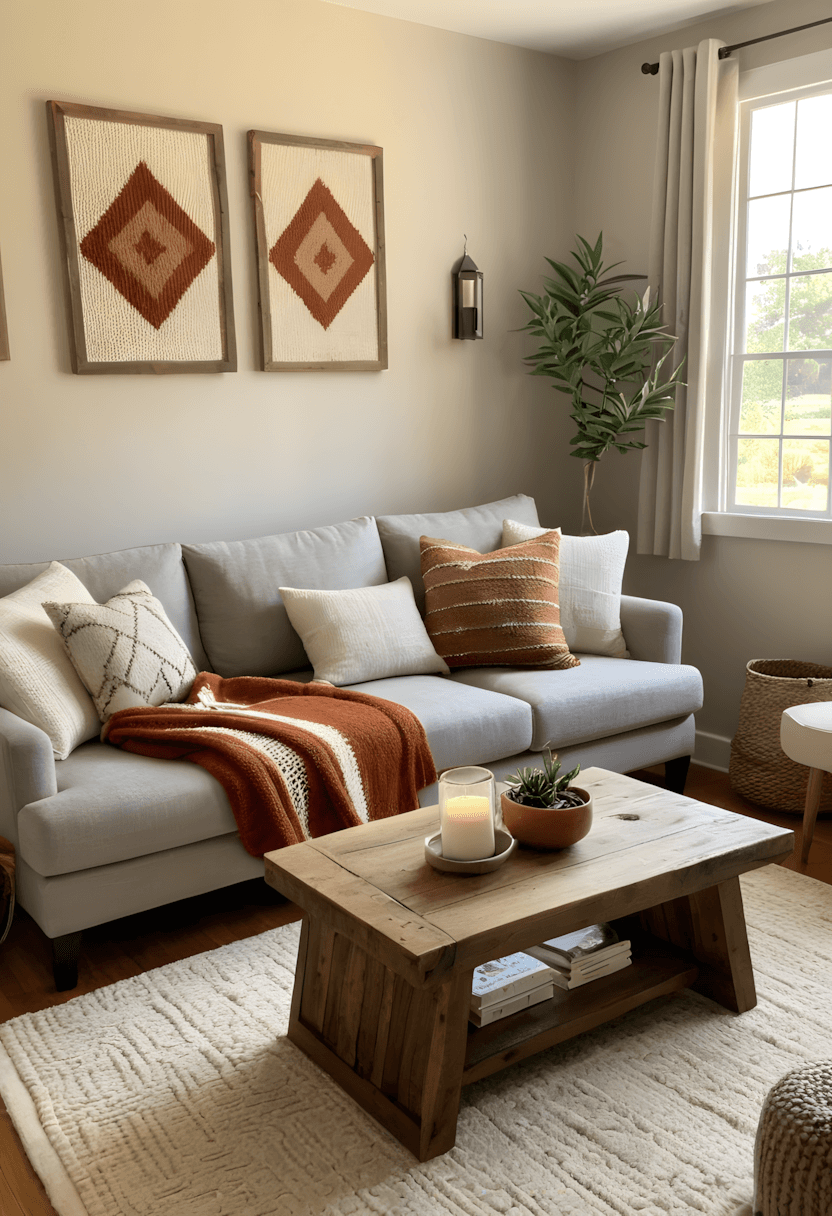
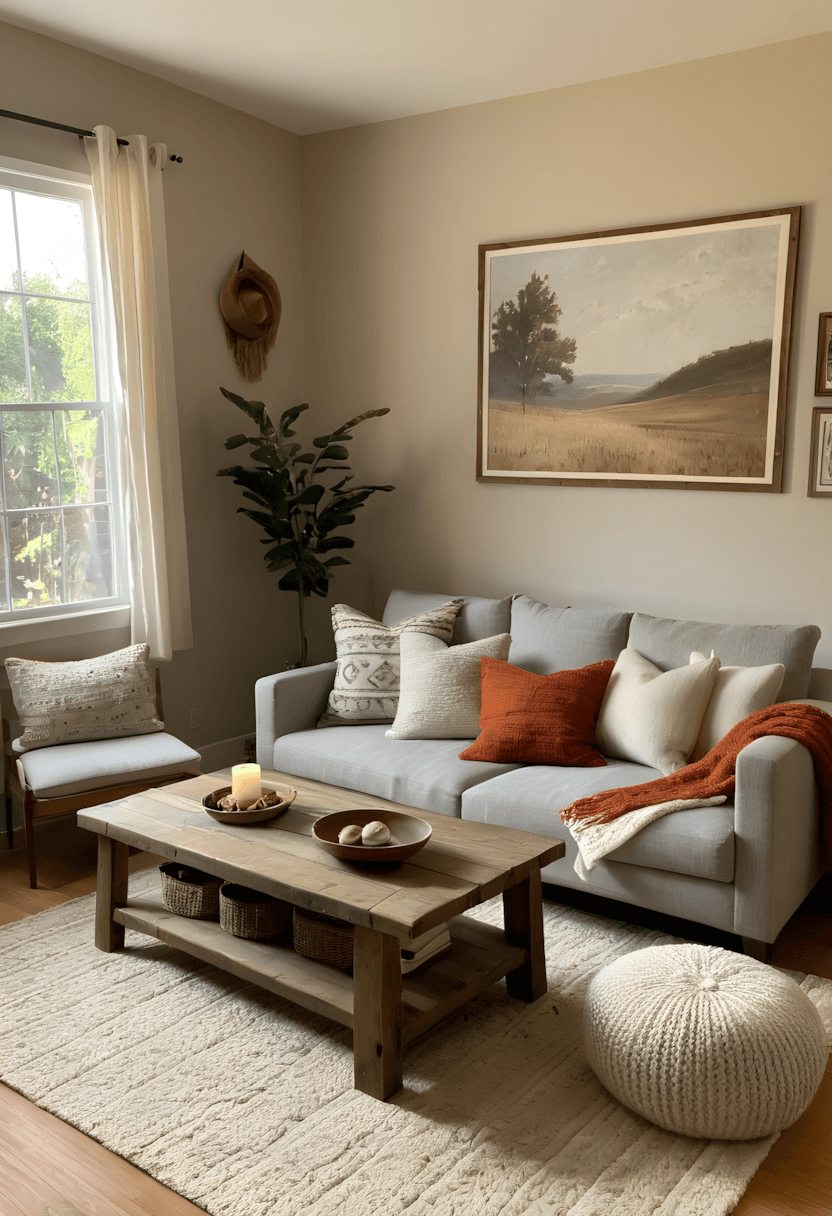
This understated approach often appeals to those preferring minimalist or Scandinavian aesthetics. Small burnt orange accents typically provide warmth without overwhelming spaces dominated by neutral color schemes.
Design consideration: Minimal color introduction often allows for testing preferences while providing gentle warmth that enhances rather than dominates neutral foundations.
Practical benefit: Small accents typically offer affordable experimentation while providing opportunities to gradually increase color presence as comfort with bold hues develops.
13. Coordinated Seating Arrangements
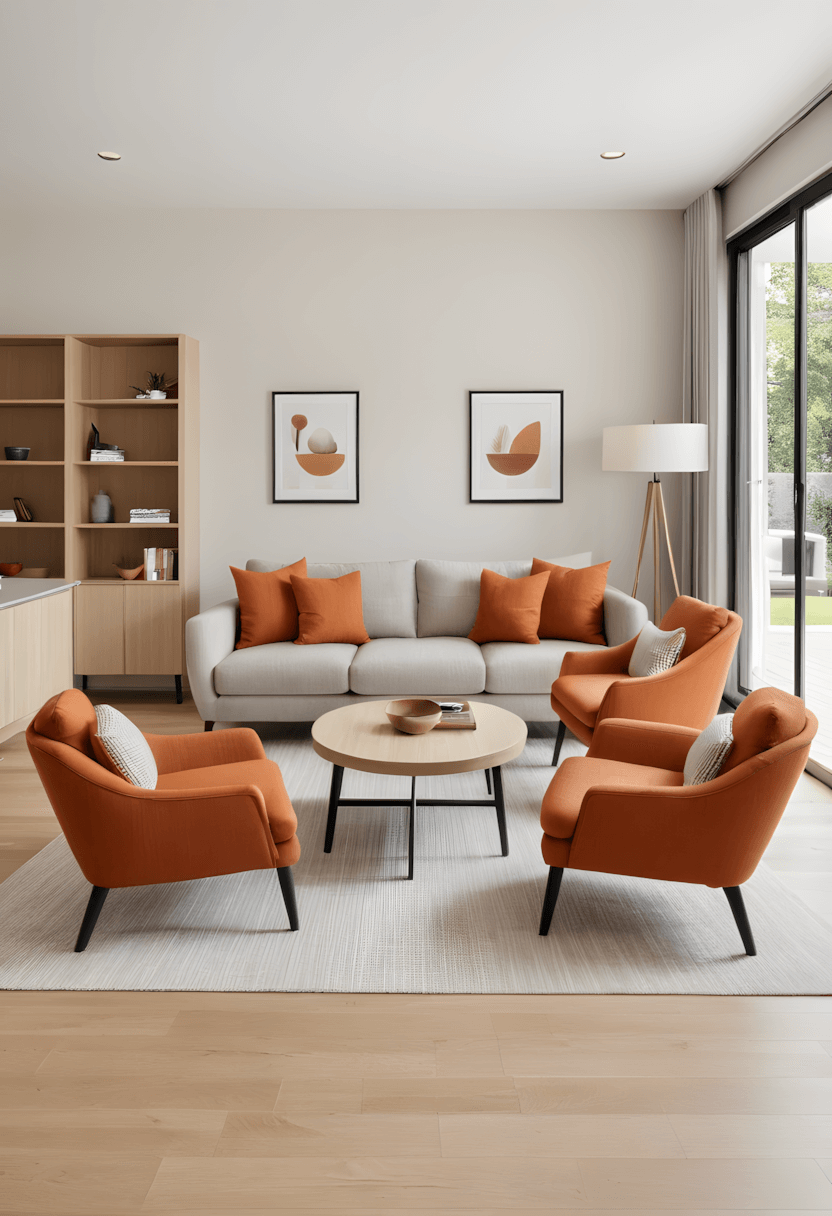
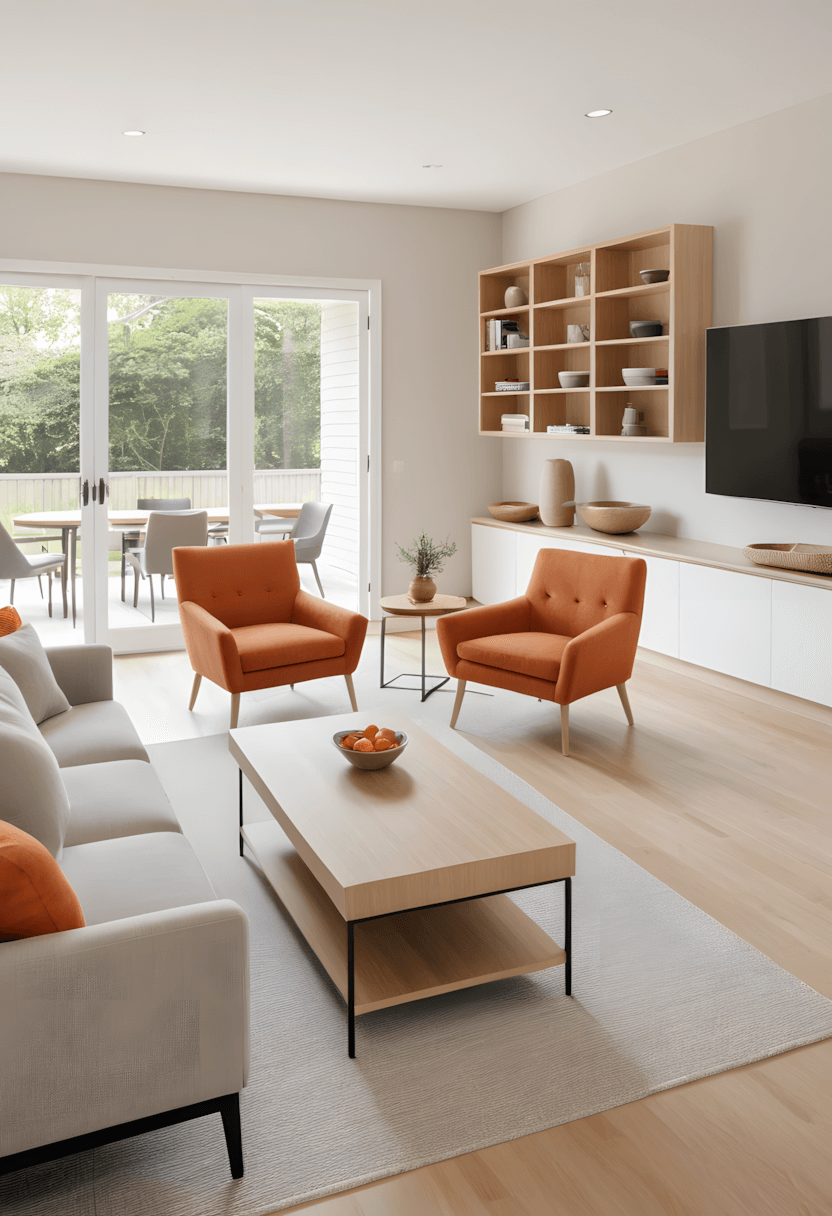
This furniture approach often appeals to homeowners wanting cohesive yet interesting seating areas. Burnt orange accent chairs typically provide color coordination while offering additional seating that enhances room functionality.
Design consideration: Mixed seating often creates visual interest while providing varied comfort options that accommodate different activities and user preferences.
Practical benefit: Additional seating typically improves entertaining capacity while accent chairs offer flexibility to rearrange spaces for different occasions or seasonal needs.
14. Foundation Rug Selections
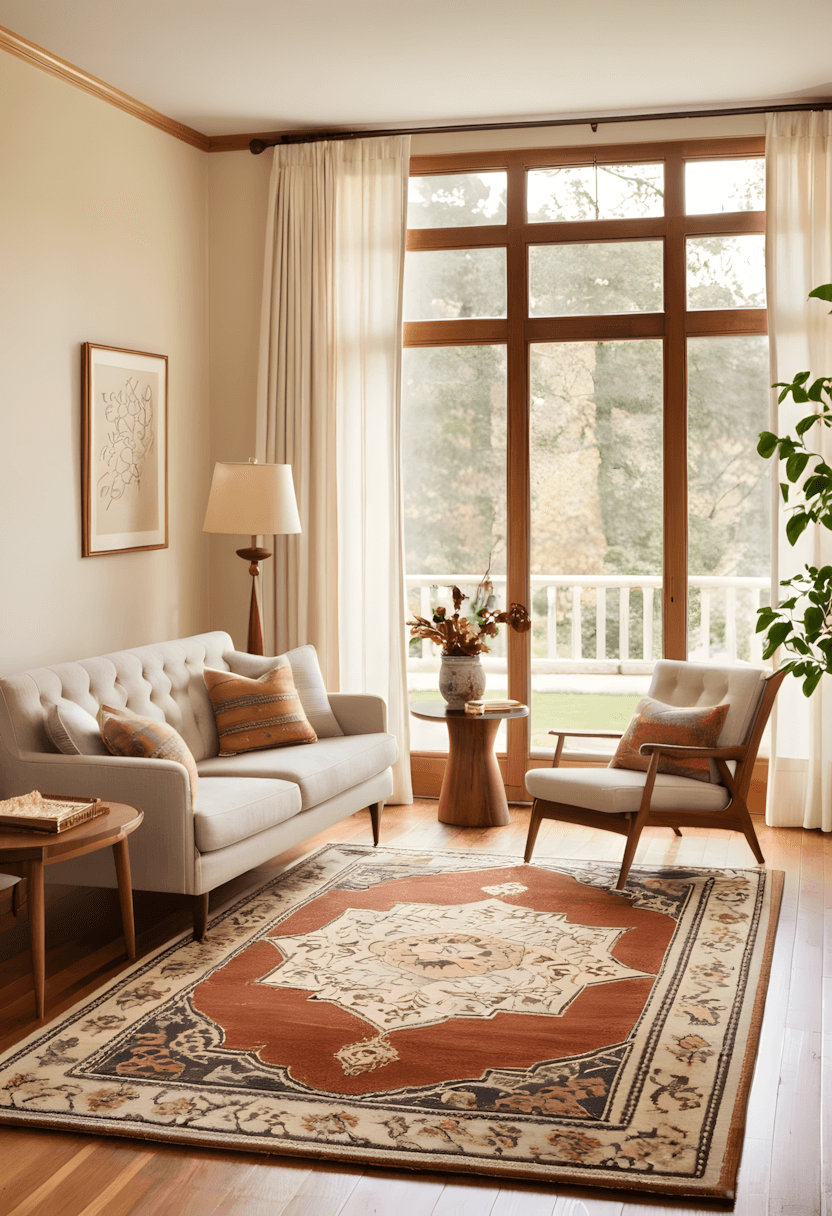
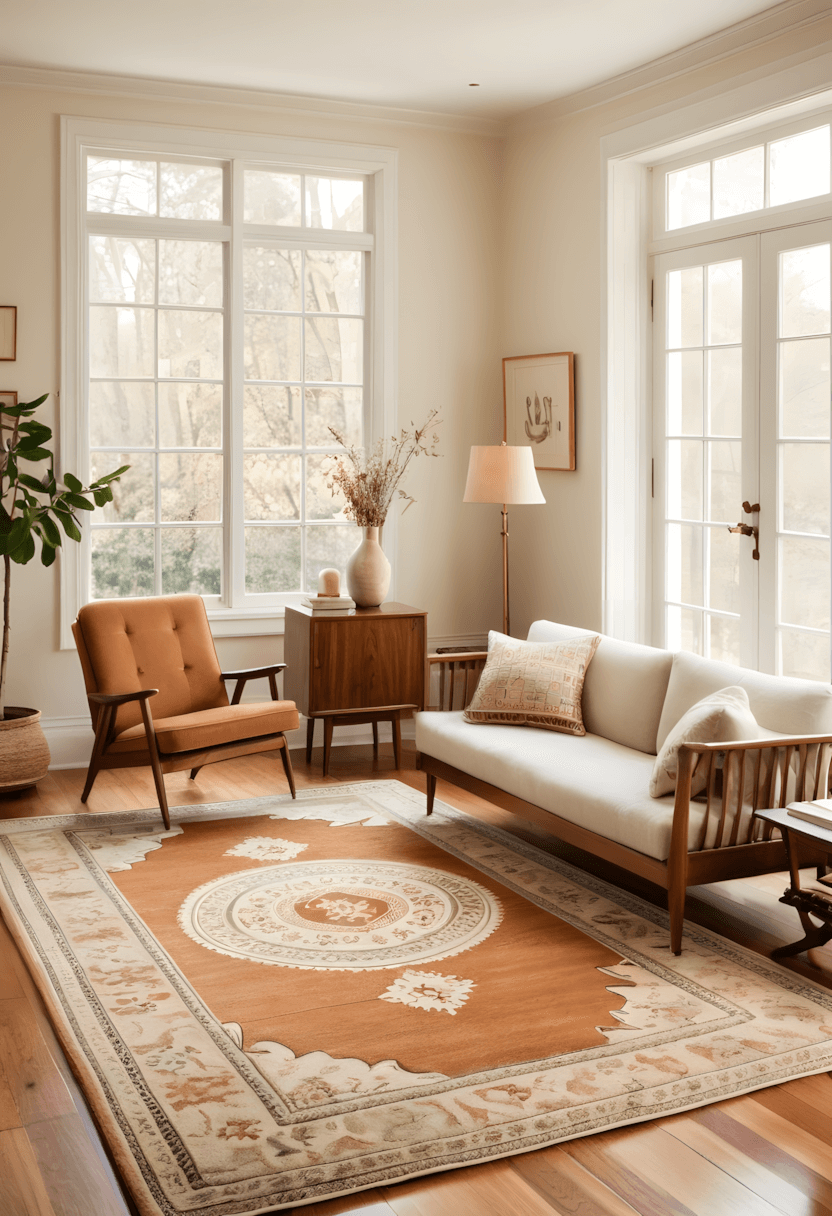
This flooring approach often appeals to those wanting color grounding without permanent commitment. Vintage-style rugs with burnt orange elements typically provide warmth while showcasing traditional patterns and craftsmanship.
Design consideration: Patterned rugs often coordinate multiple colors while providing foundation elements that unify various furniture pieces and accessories.
Practical benefit: Quality rugs typically protect flooring while offering opportunities to introduce significant color and pattern that can be changed as preferences evolve.
15. Central Table Features
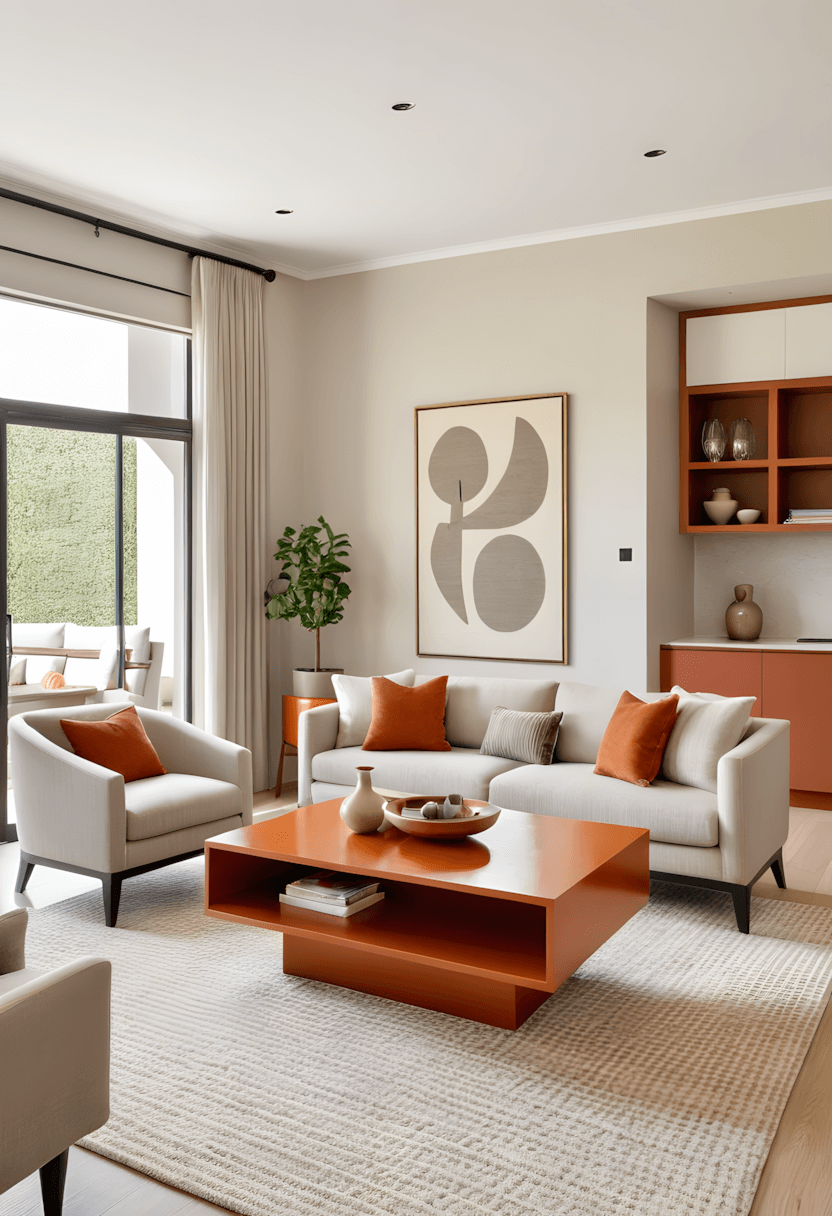
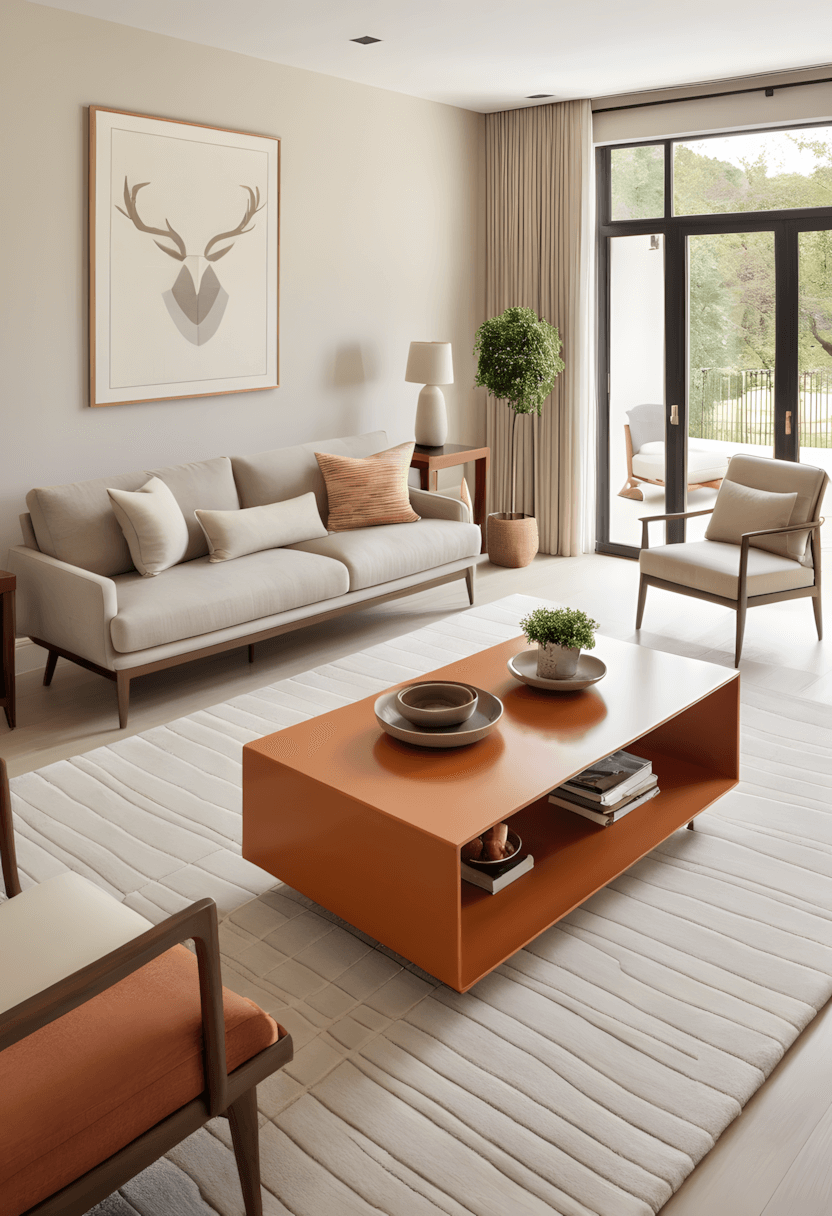
This functional approach often appeals to homeowners wanting distinctive focal points. Burnt orange coffee tables typically provide unique centerpieces while offering practical surface space for daily activities.
Design consideration: Central furniture pieces often anchor room arrangements while bold colors can coordinate with various surrounding elements and seasonal accessories.
Practical benefit: Statement tables typically serve as conversation pieces while providing necessary functionality that justifies their visual prominence in room layouts.
16. Custom Lighting Solutions
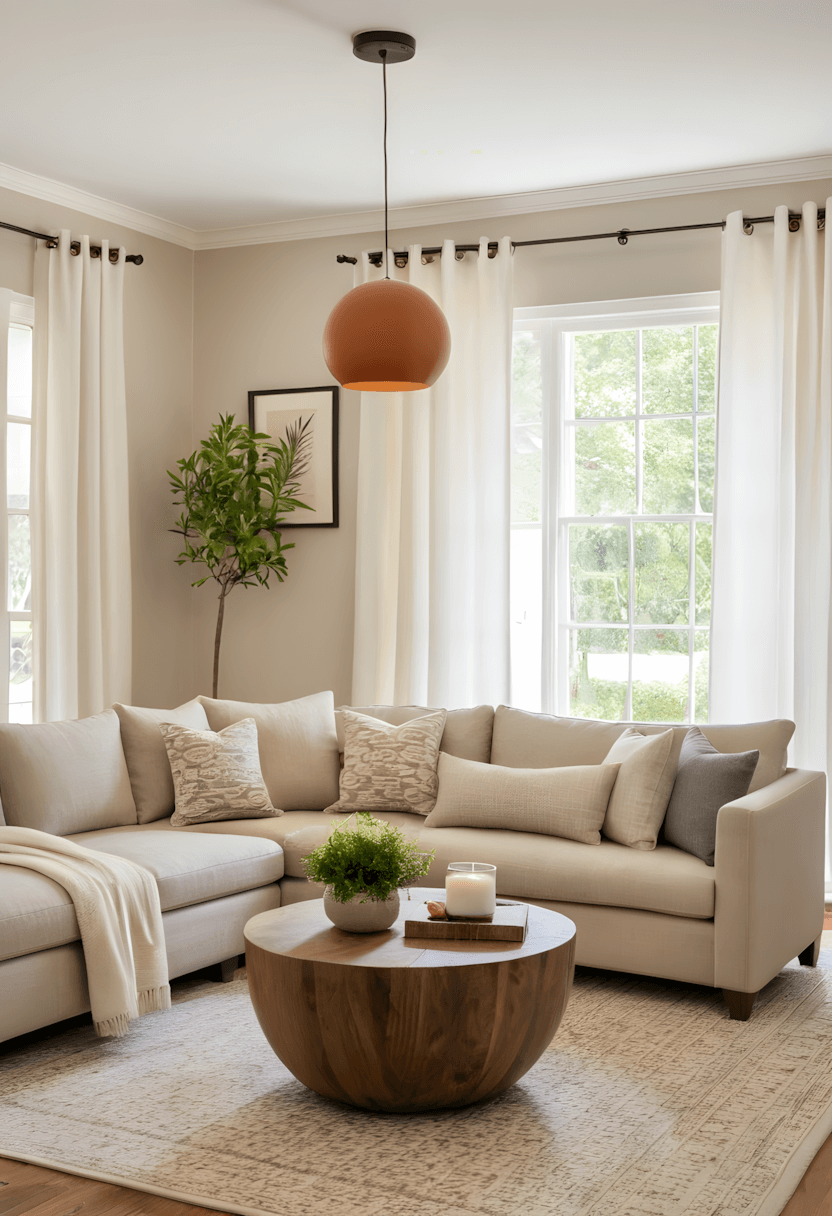
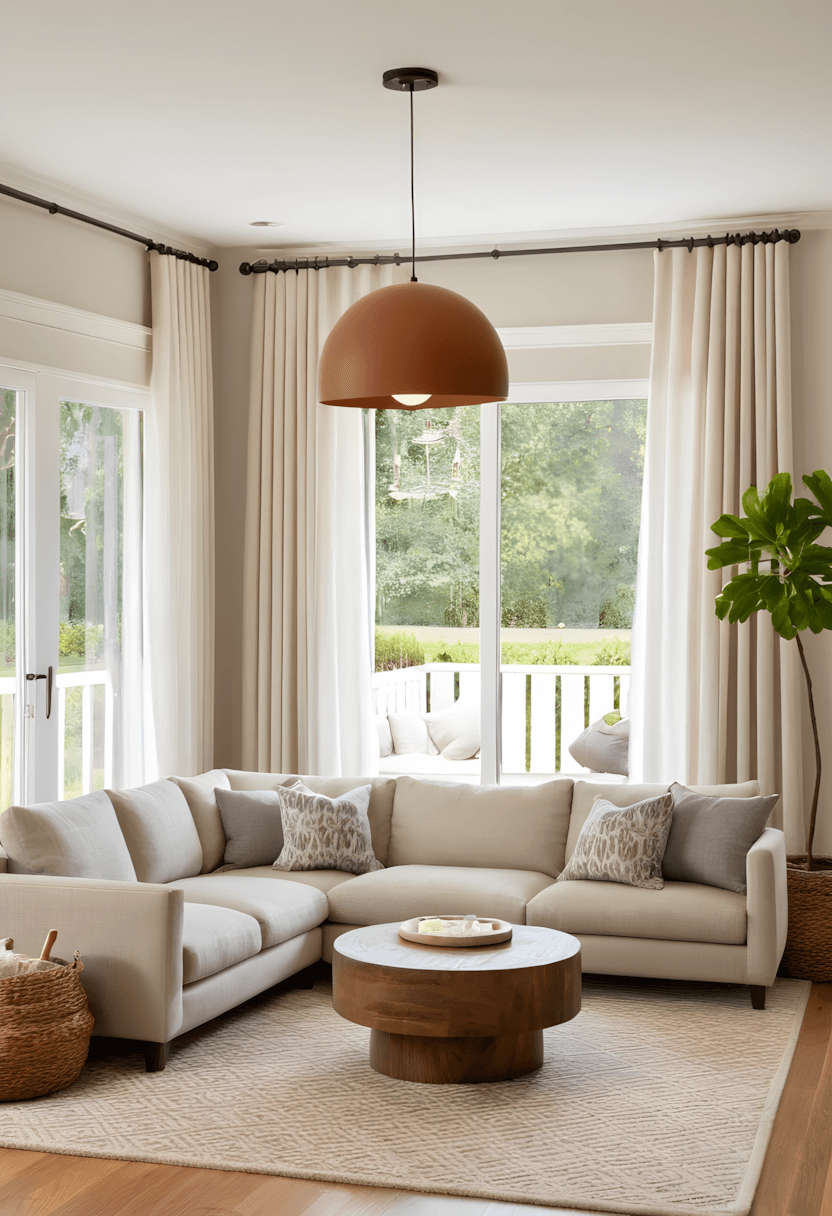
This illumination approach often appeals to those seeking both function and decorative appeal. Burnt orange lighting fixtures typically provide warm ambiance while serving as artistic elements that enhance overall room character.
Design consideration: Colored lighting often creates atmospheric effects while warm tones can enhance the cozy feeling during evening hours when artificial lighting dominates.
Practical benefit: Unique lighting typically adds property value while providing memorable design elements that distinguish spaces from standard lighting approaches.
17. Clean Contrast Combinations
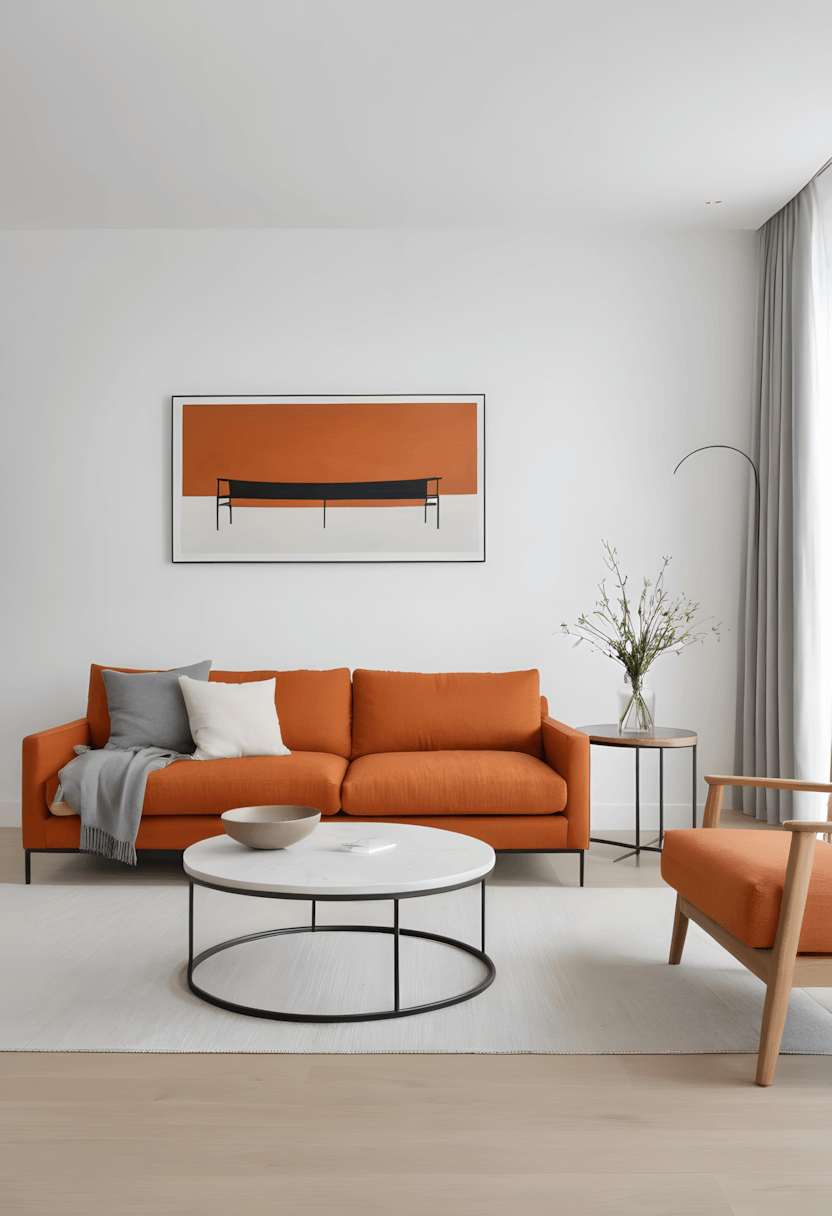
This modern approach often appeals to homeowners wanting fresh, contemporary aesthetics. Burnt orange combined with white typically creates clean visual relationships while maintaining warmth that prevents stark feelings.
Design consideration: High contrast pairings often create energizing environments while requiring balance to prevent overwhelming effects or visual fatigue.
Practical benefit: Clean color schemes typically remain current longer while providing flexibility to adjust accent colors as design trends and personal preferences change.
18. Leather Furniture Coordination
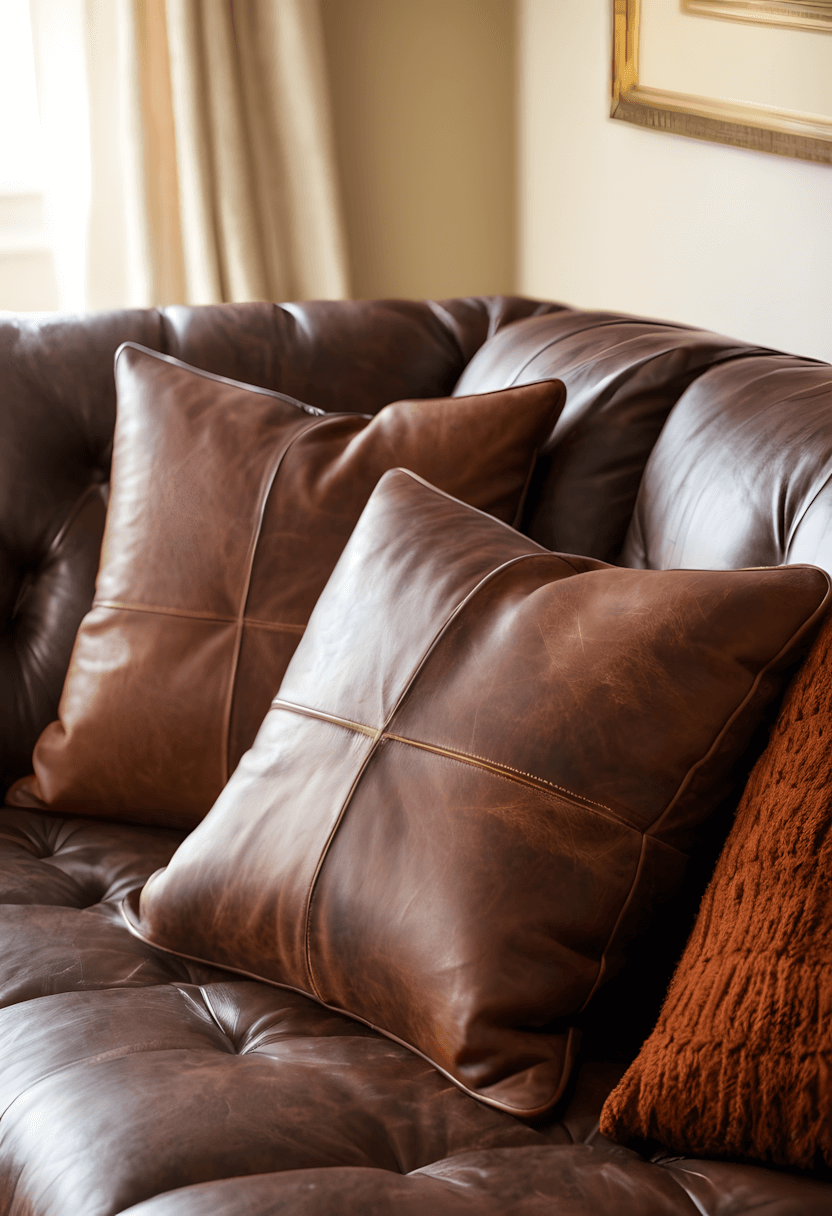
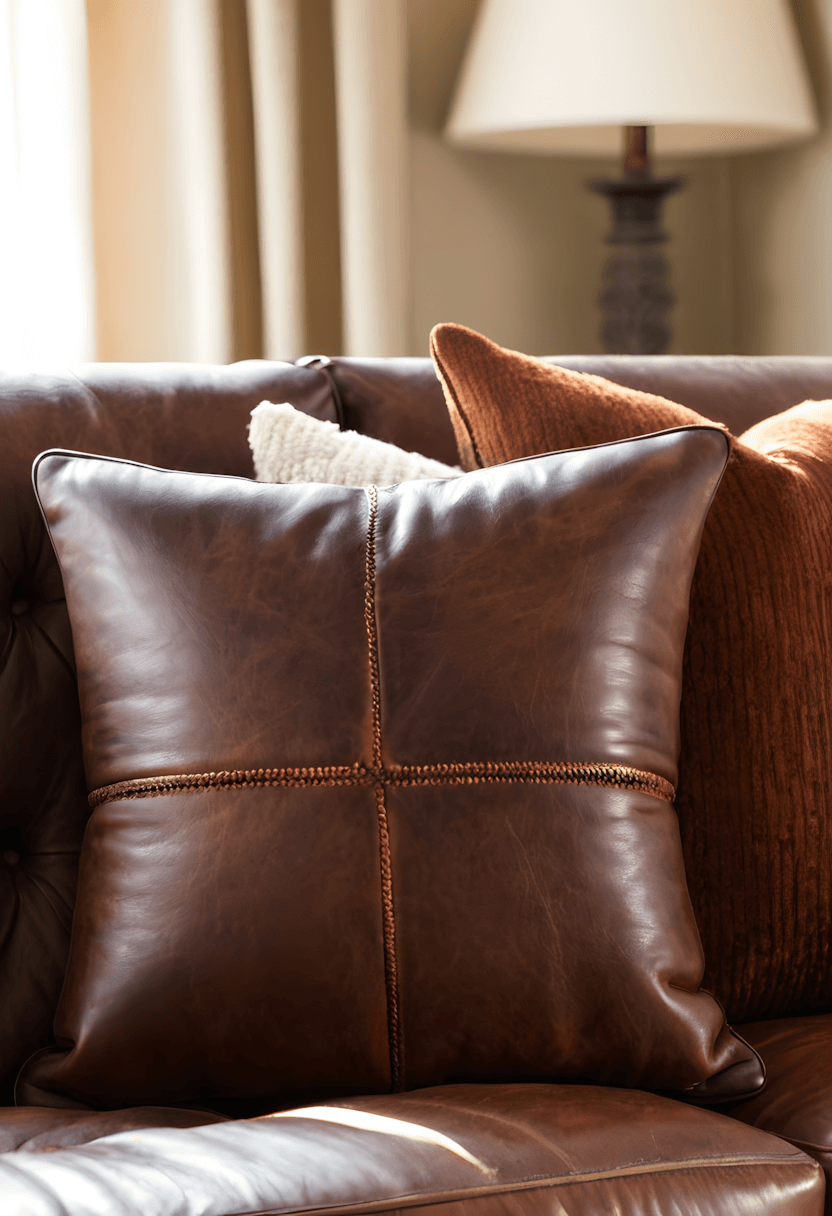
This material approach often appeals to those wanting durable, comfortable seating solutions. Burnt orange pillows on leather furniture typically provide color warmth while enhancing the natural character of quality leather pieces.
Design consideration: Leather and burnt orange often complement each other naturally while providing rich textures that enhance overall room sophistication and comfort.
Practical benefit: Leather furniture typically improves with age while burnt orange accents provide opportunities to refresh appearance without replacing major furniture investments.
19. Earth Tone Layering
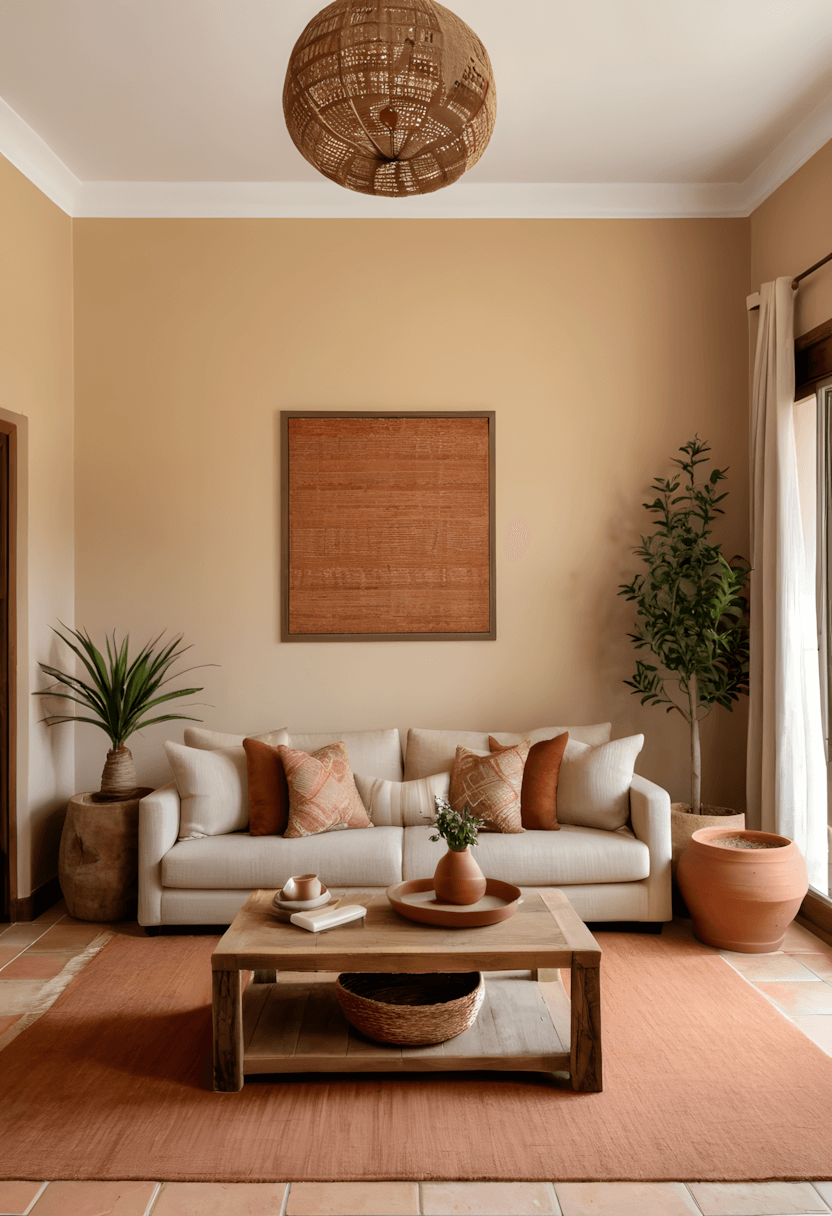
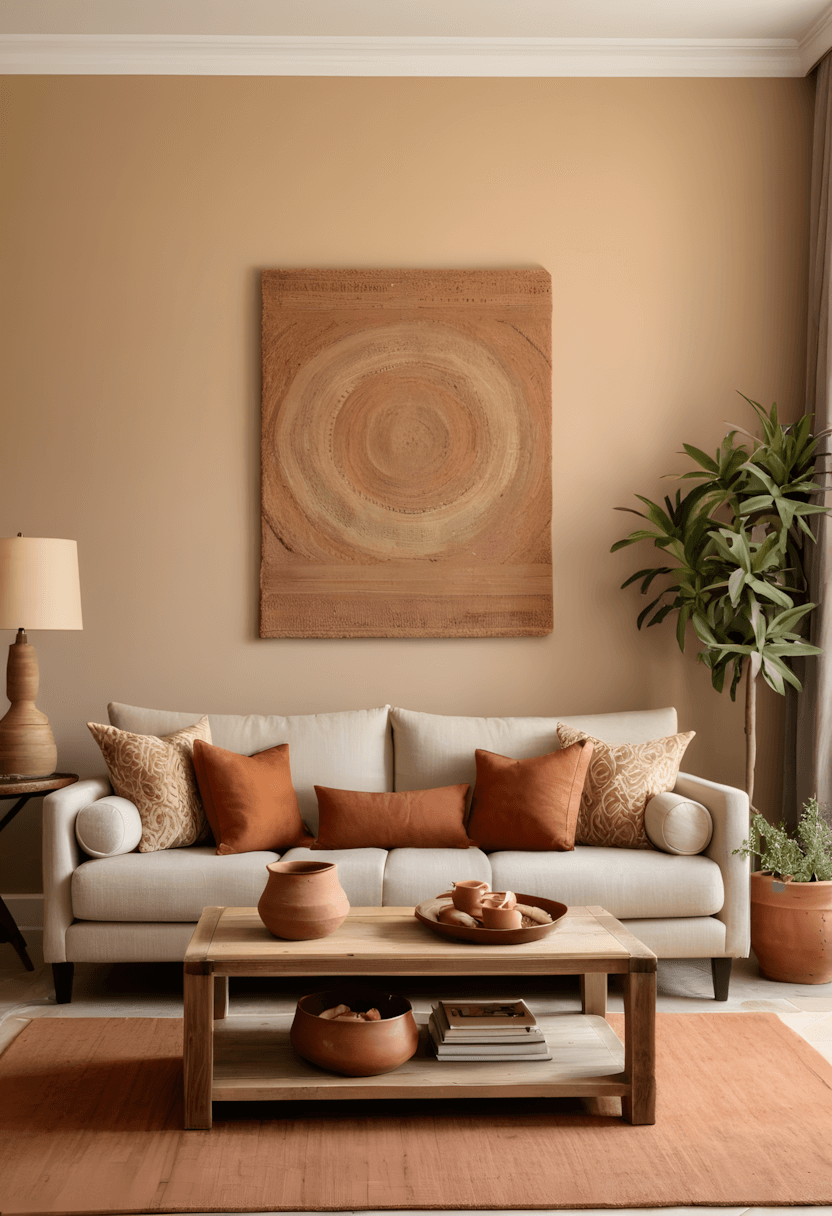
This natural approach often appeals to homeowners seeking organic, grounded color schemes. Burnt orange combined with terracotta and brown typically creates harmonious palettes while maintaining connection to natural environments.
Design consideration: Earth tone combinations often create calming environments while varied shades within the same color family provide visual interest without jarring contrasts.
Practical benefit: Natural color palettes typically remain appealing longer while providing flexibility to incorporate various natural materials and seasonal elements.
20. Minimalist Accent Strategy
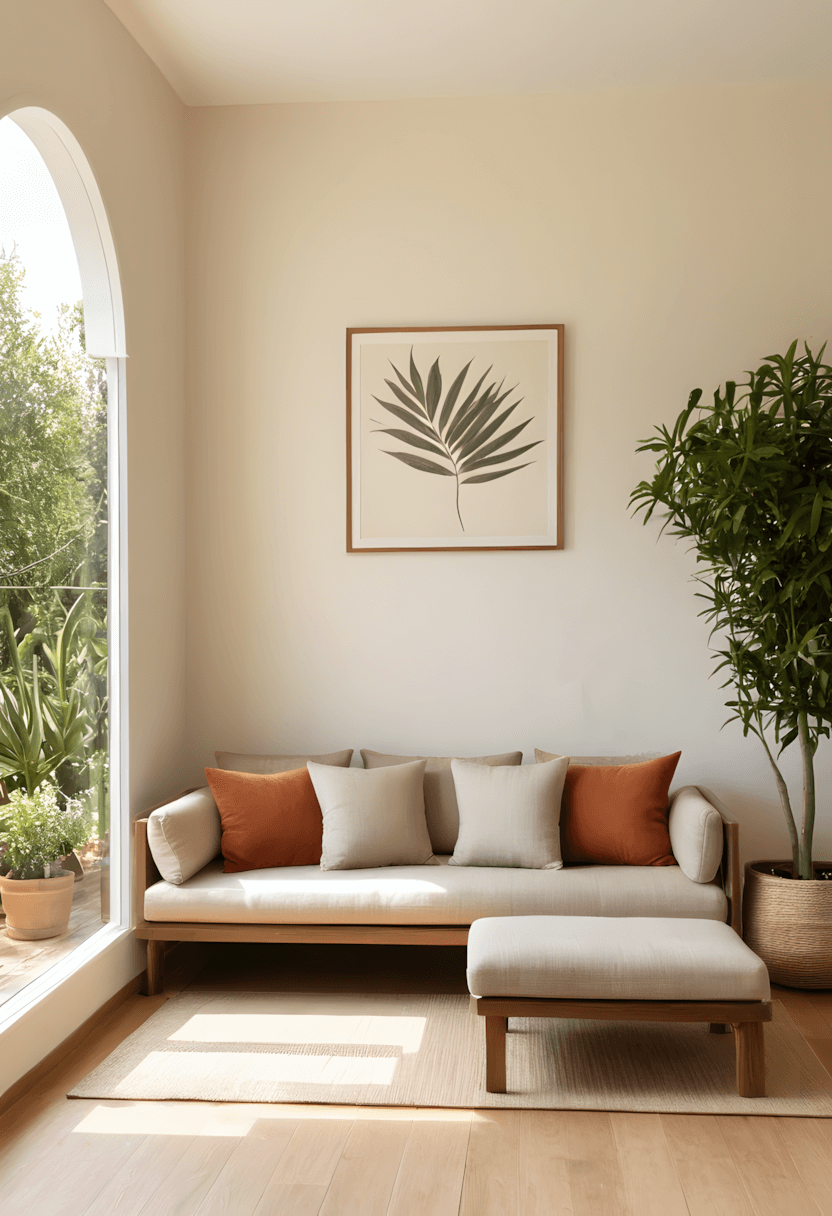
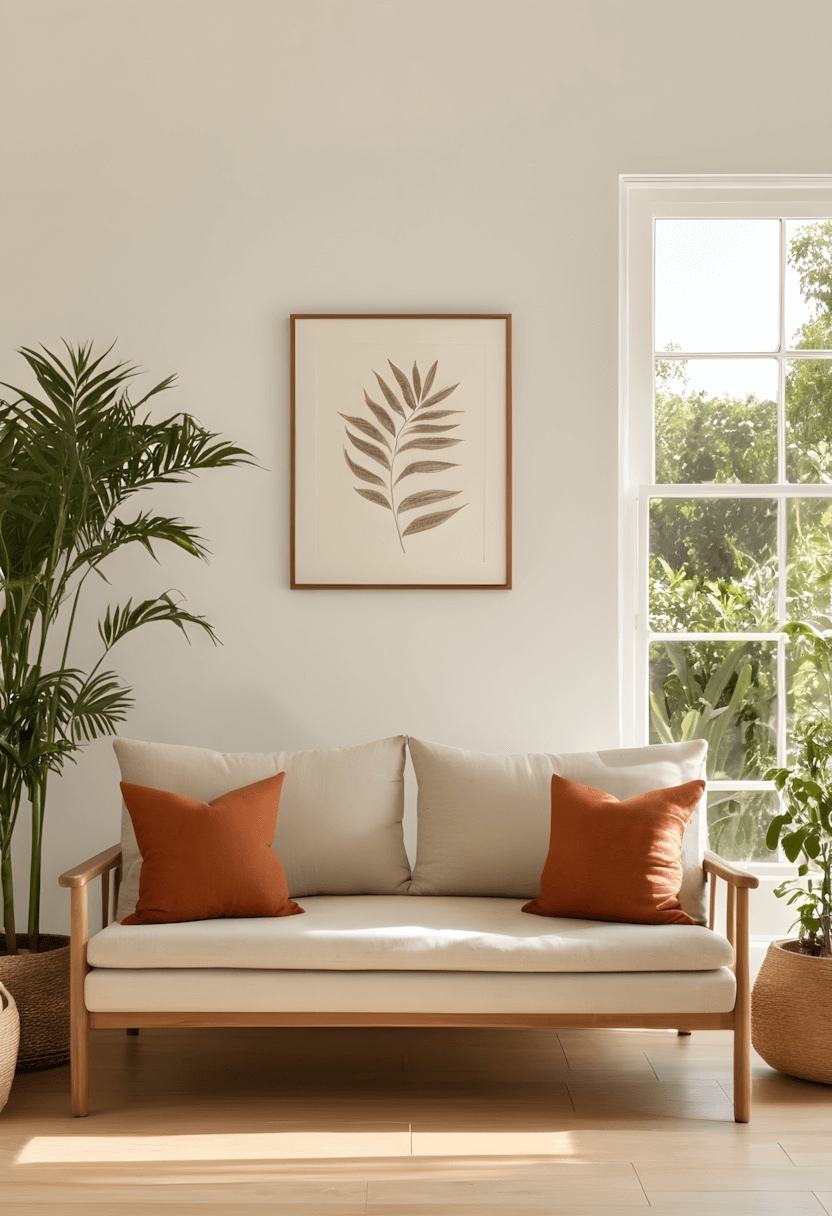
This subtle approach often appeals to those preferring understated design approaches. Small burnt orange accessories typically provide gentle color introduction while maintaining the clean aesthetics characteristic of minimalist design.
Design consideration: Minimal color application often allows for careful testing while providing just enough warmth to enhance neutral schemes without overwhelming clean lines.
Practical benefit: Small accessories typically offer affordable color experimentation while providing flexibility to adjust or remove color elements as design preferences develop.
Creating Your Burnt Orange Living Space
Through various warm-color design projects, I’ve observed that successful burnt orange integration often balances the color’s natural richness with complementary neutrals and varied textures. These spaces typically succeed because they embrace burnt orange’s warmth while preventing color overwhelming through thoughtful distribution and coordination with existing elements.
The burnt orange approach often works well for modern homeowners because it typically creates environments that feel both energizing and comfortable. Effective implementation usually involves starting with smaller elements to test color compatibility, then gradually incorporating larger pieces as confidence with the palette develops.
Planning considerations often include assessing your room’s natural light throughout different times of day, existing furniture colors that need coordination, and personal tolerance for bold color presence. Many successful projects begin with removable elements like textiles and accessories, allowing homeowners to experience the color’s impact before committing to major furniture pieces or permanent installations.
Remember: For any electrical work, structural modifications, or built-in installations related to lighting or architectural changes, always consult with licensed professionals to ensure proper installation and code compliance.

